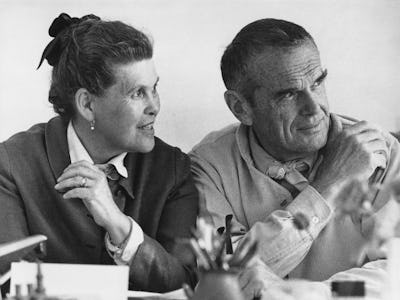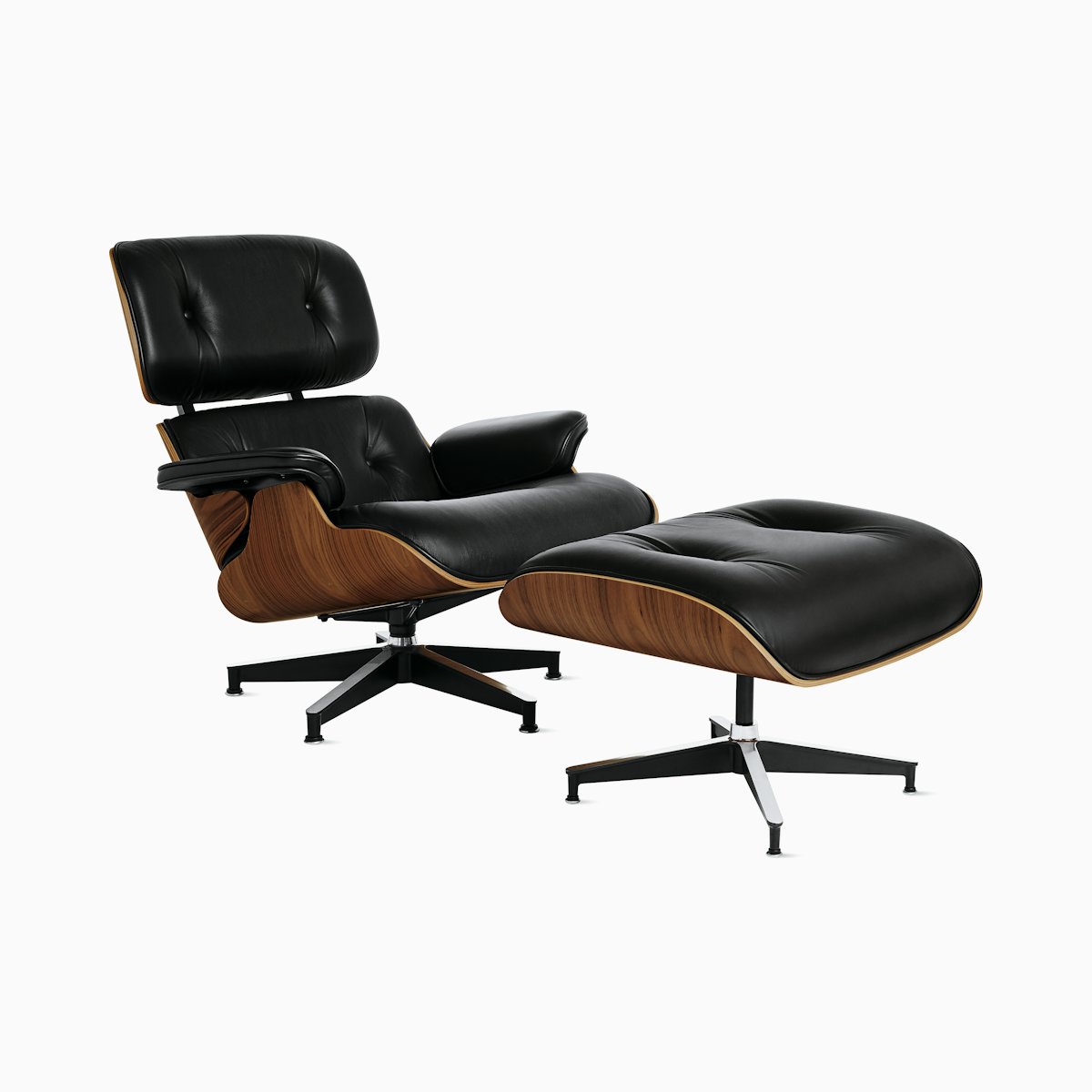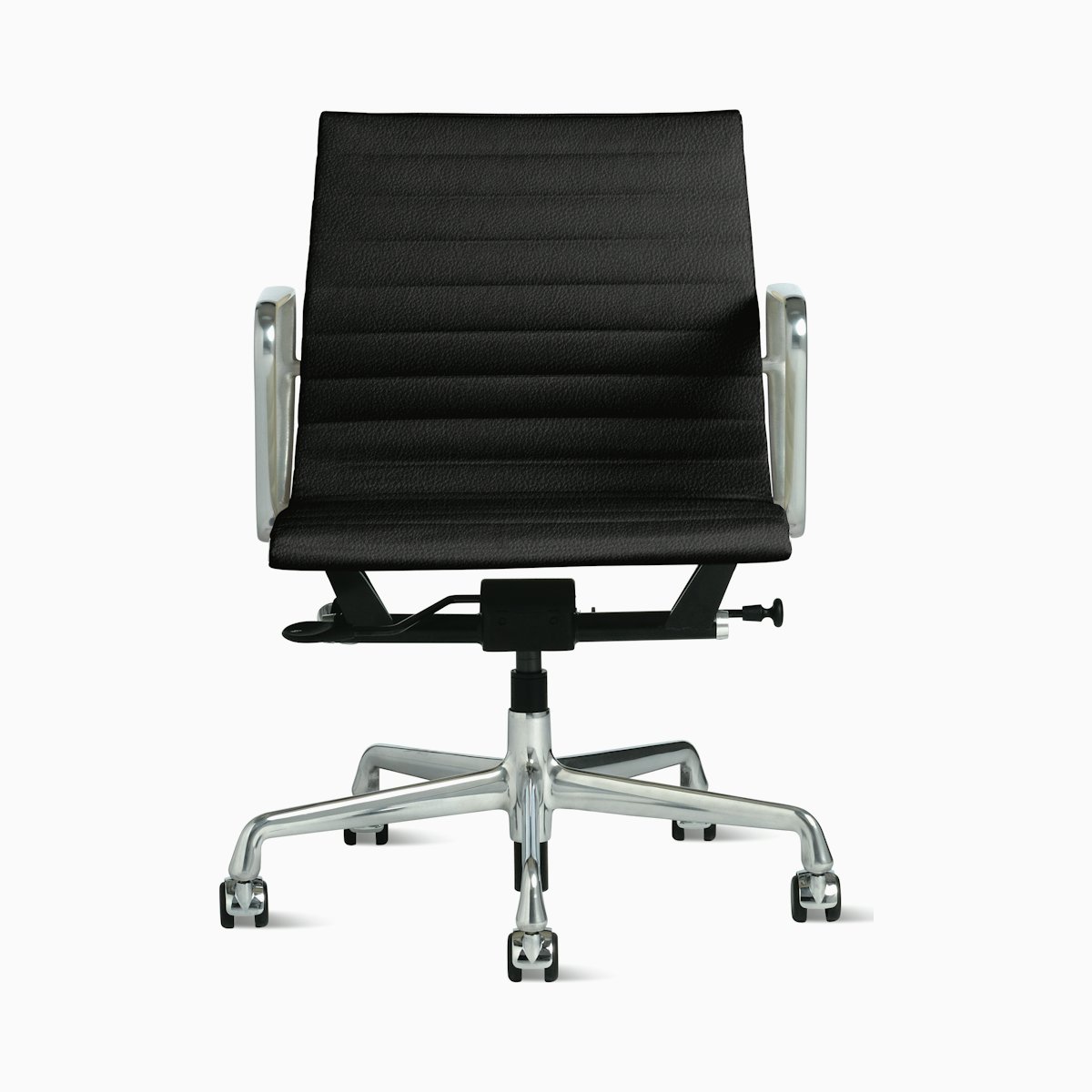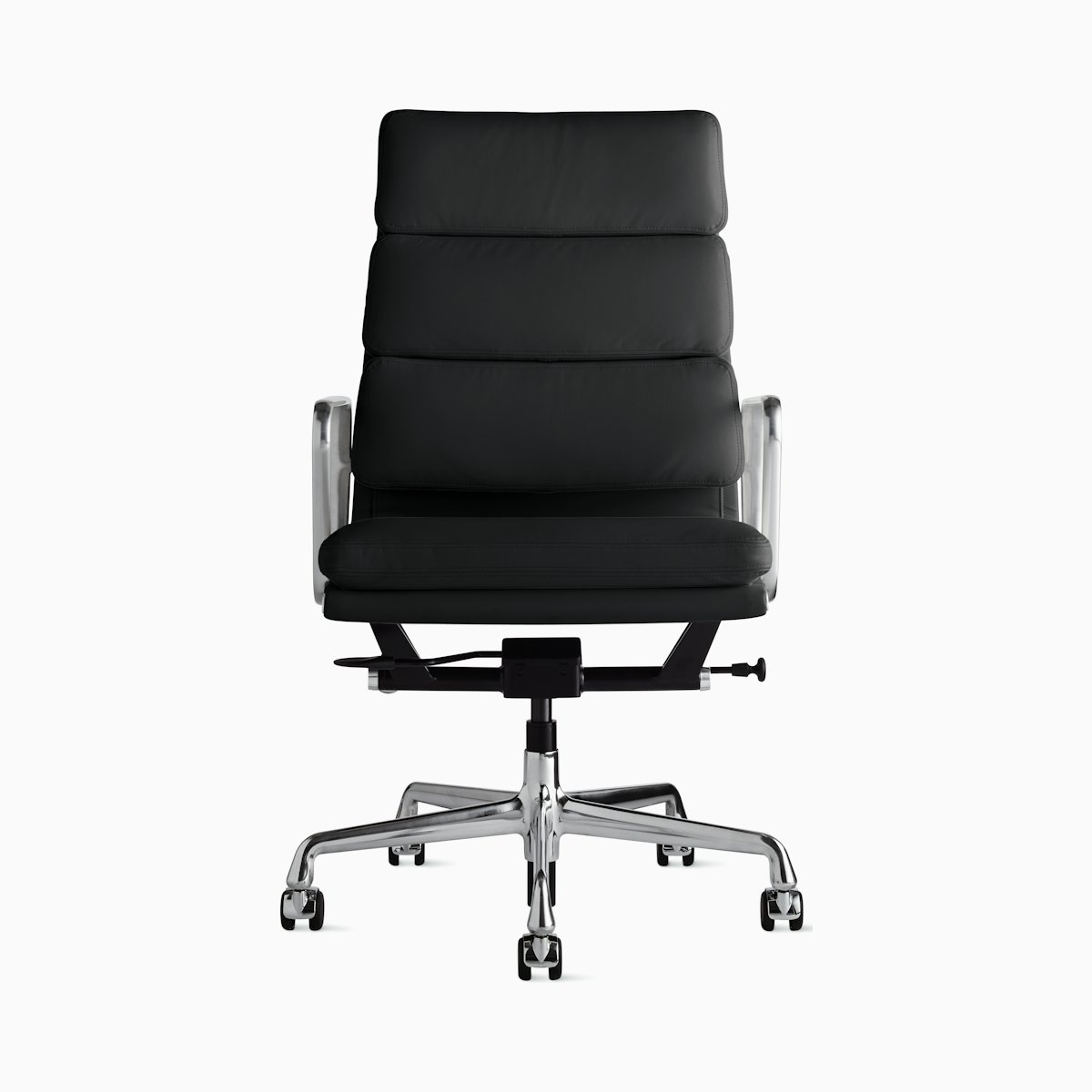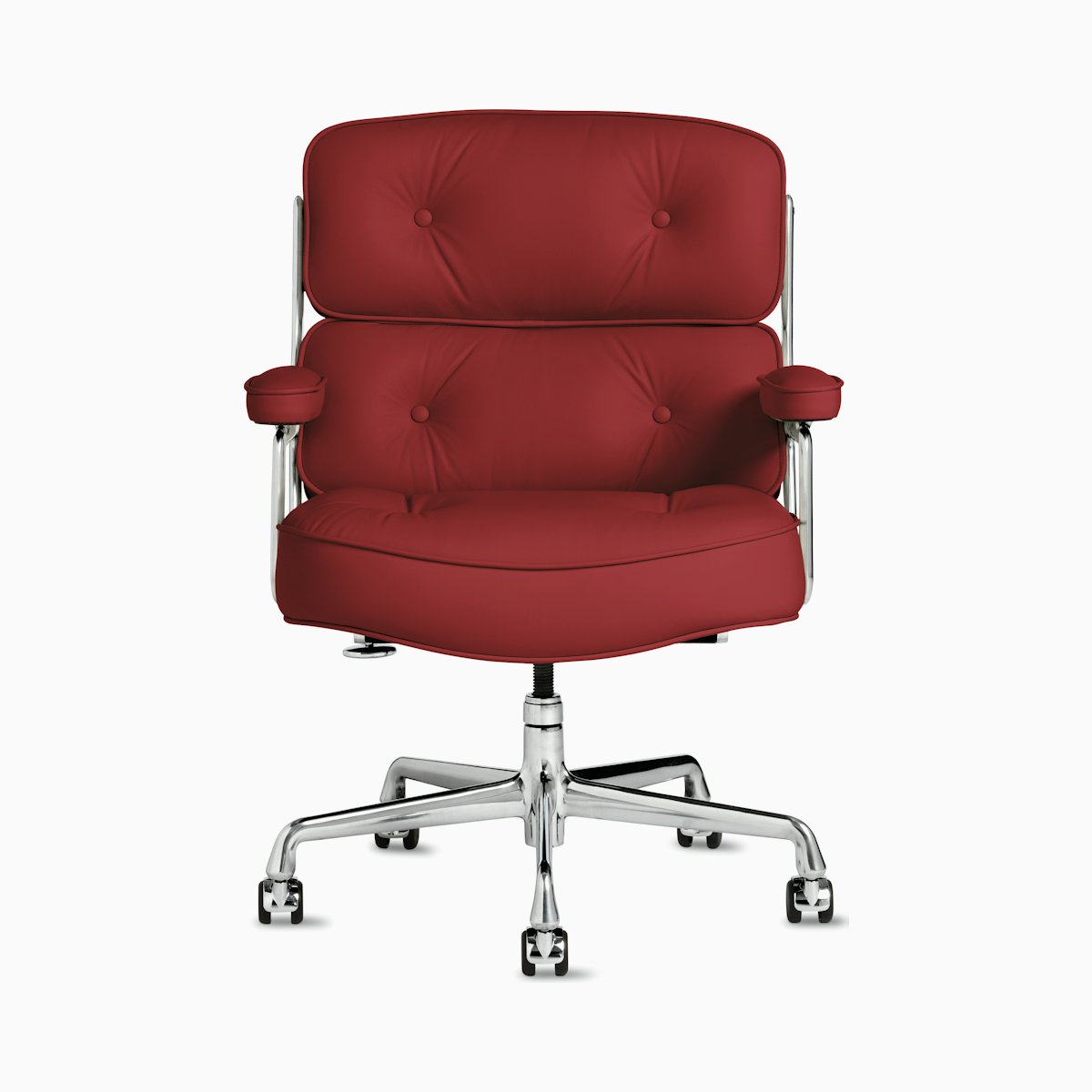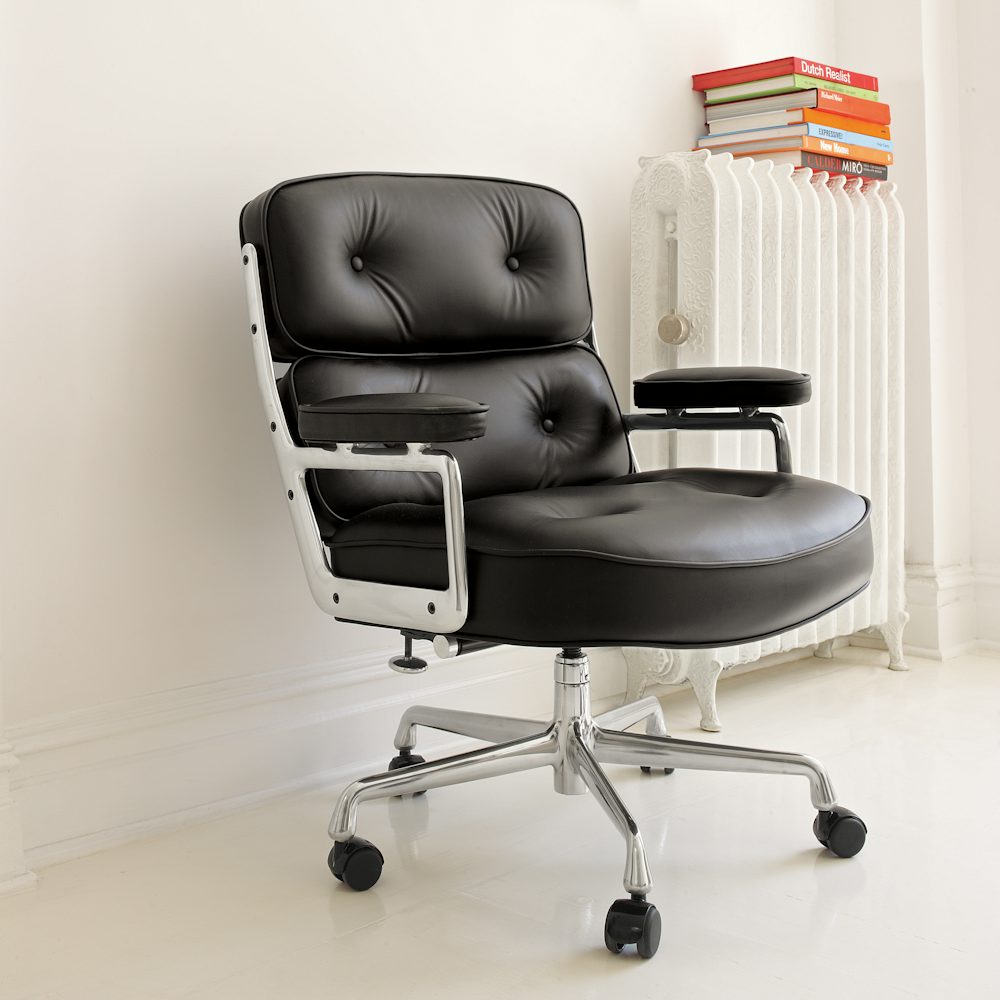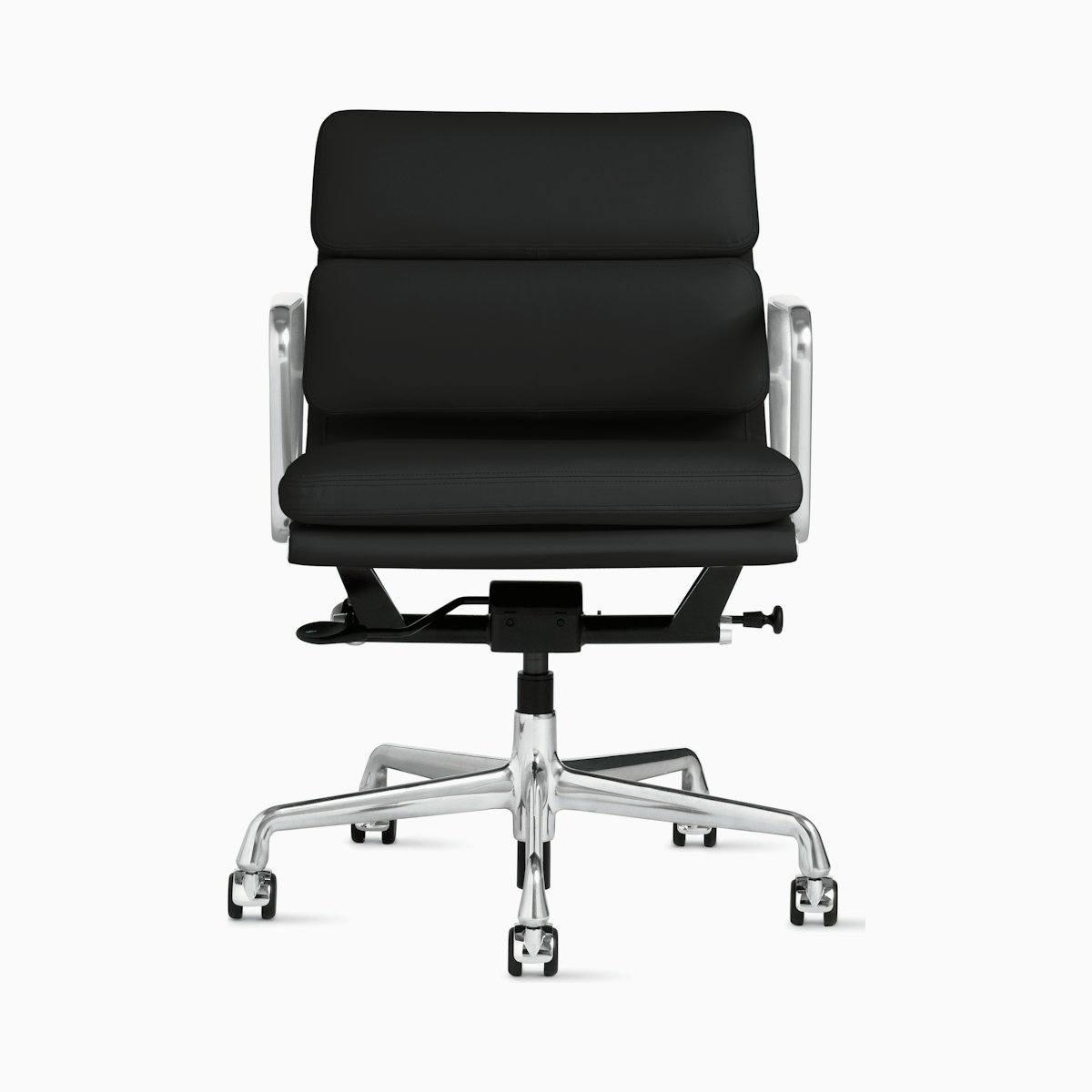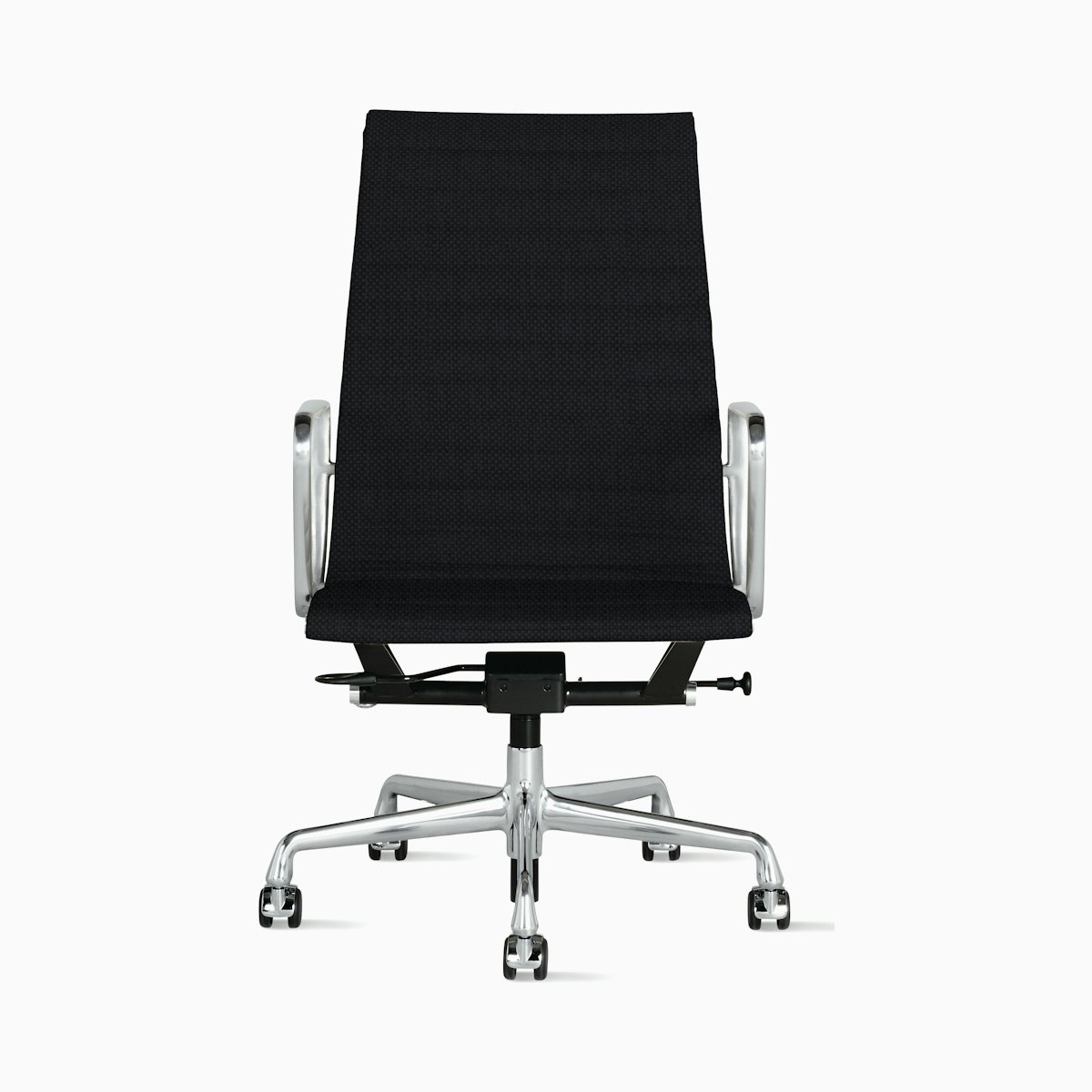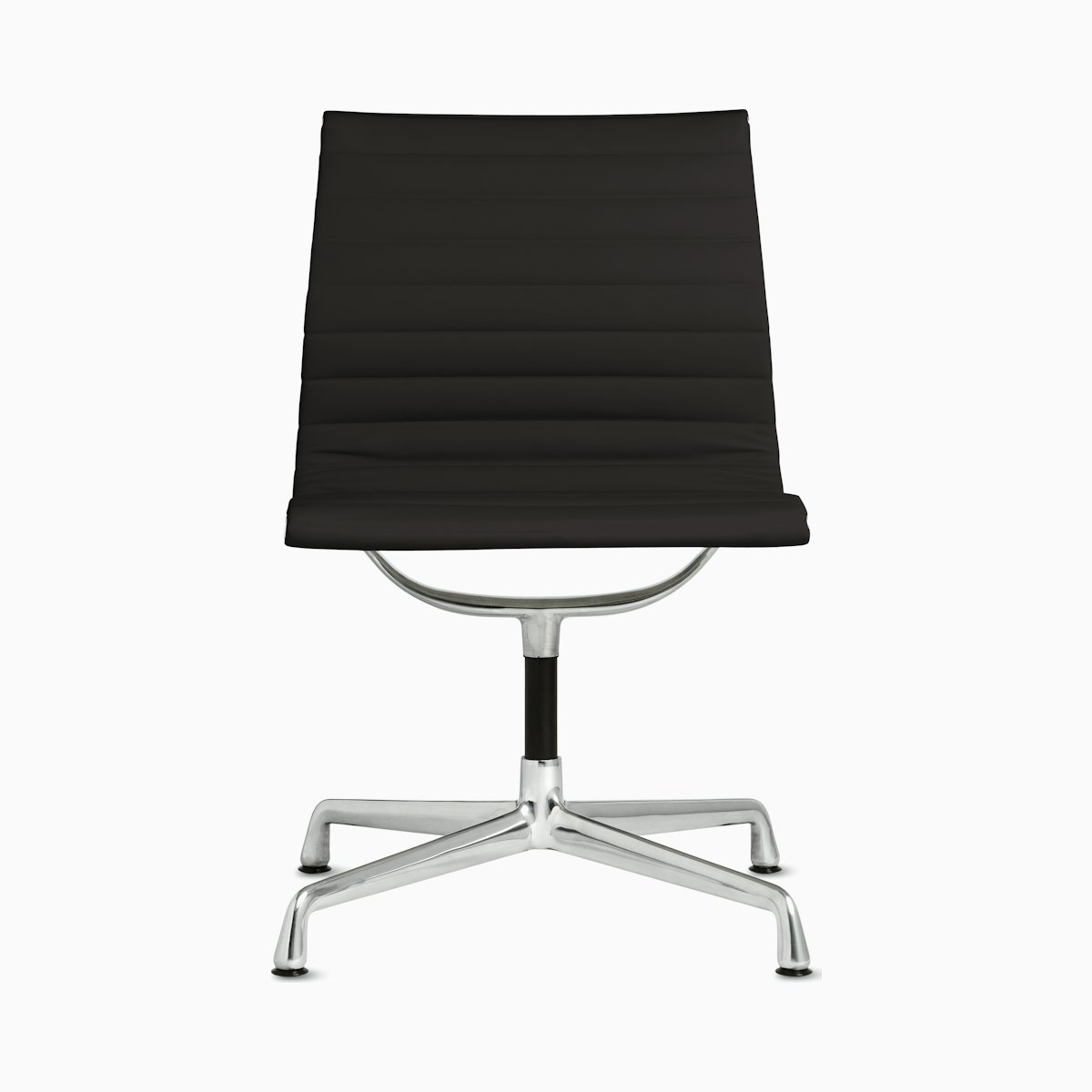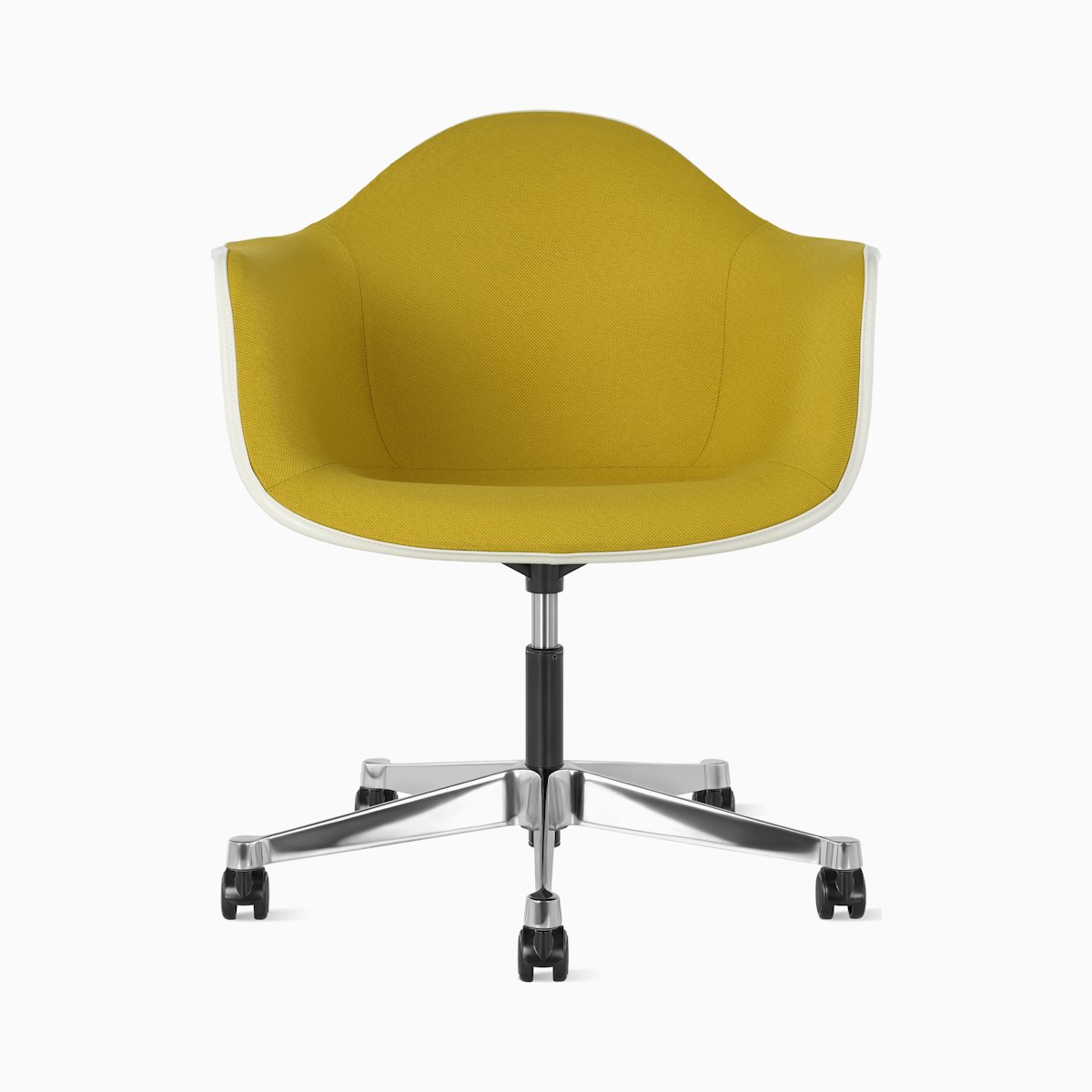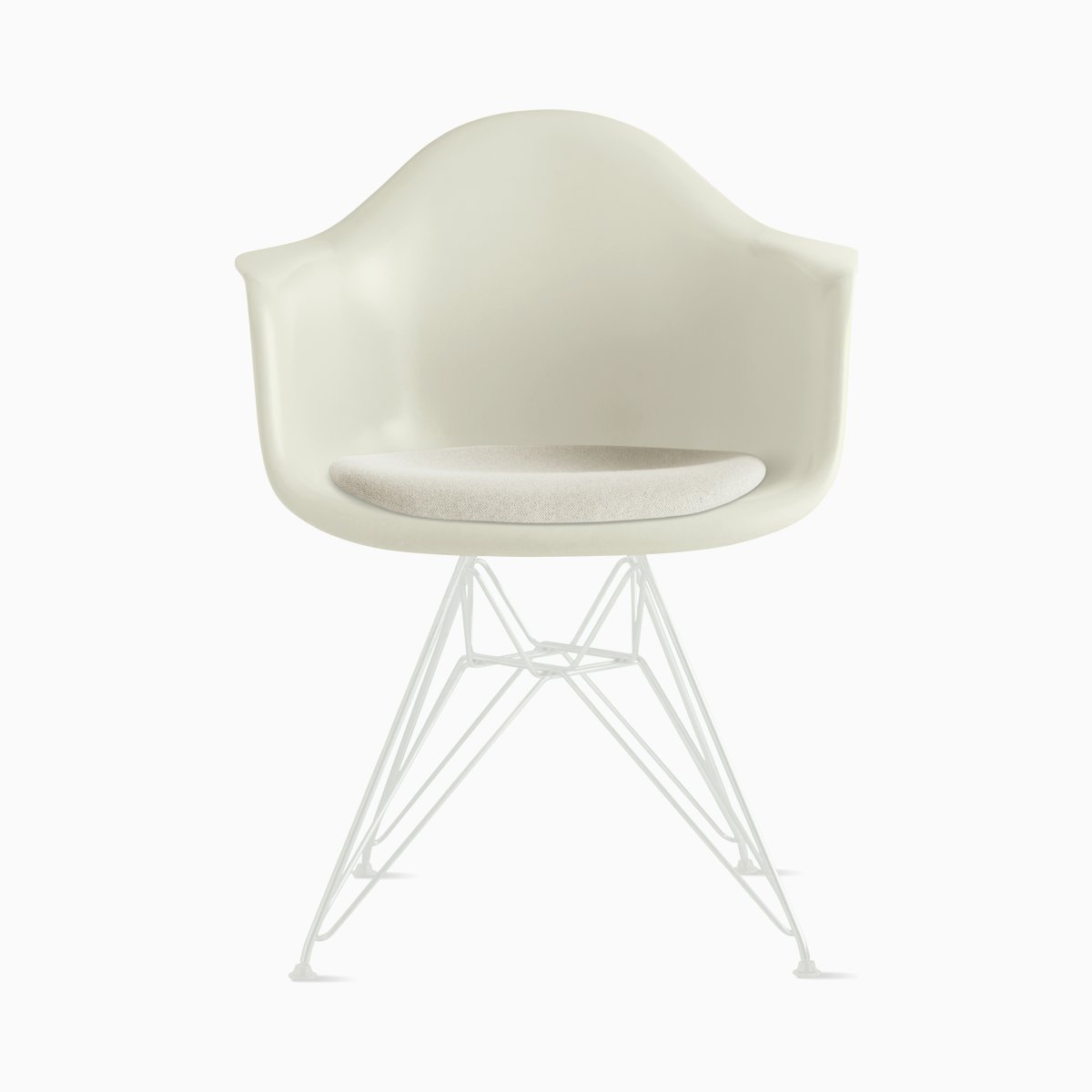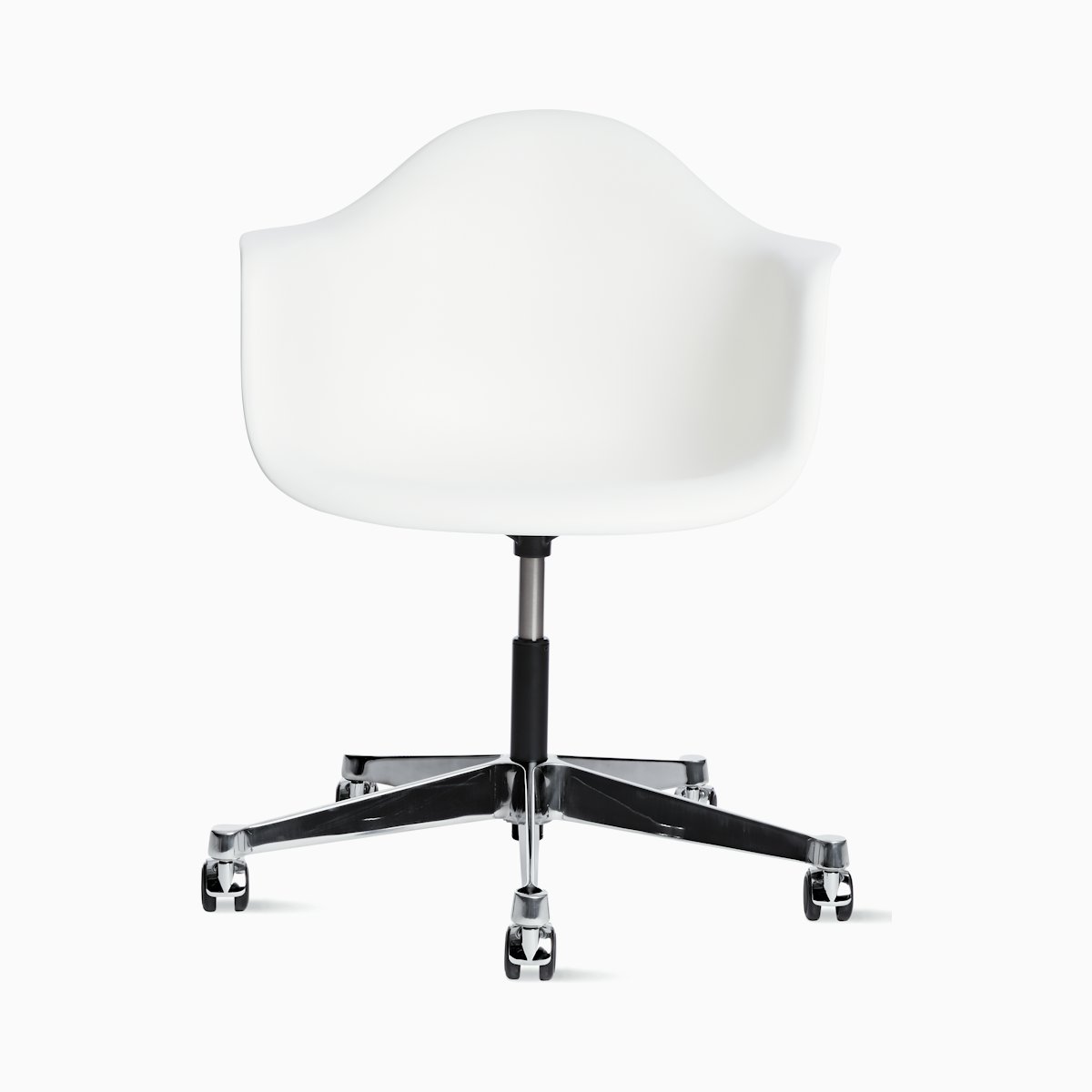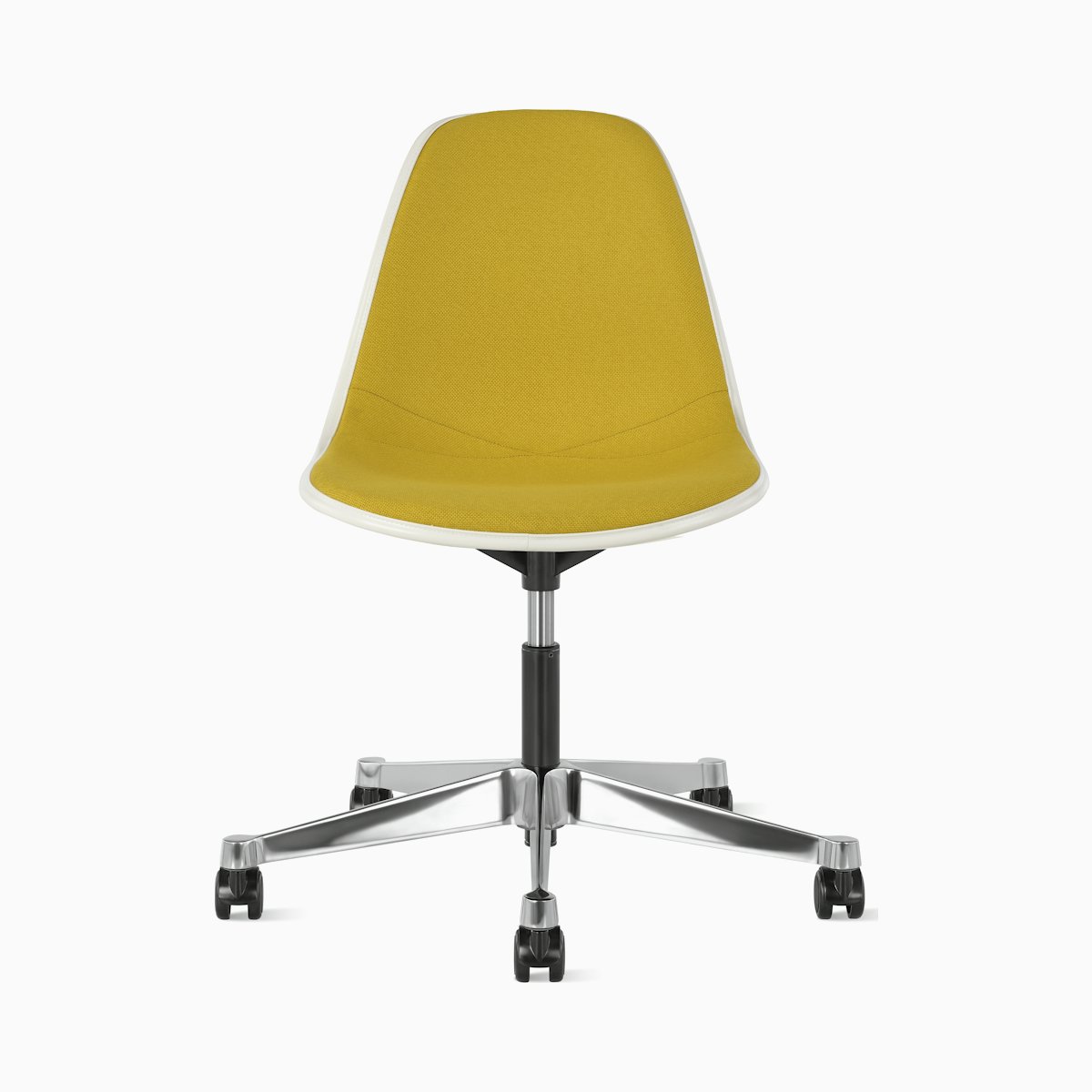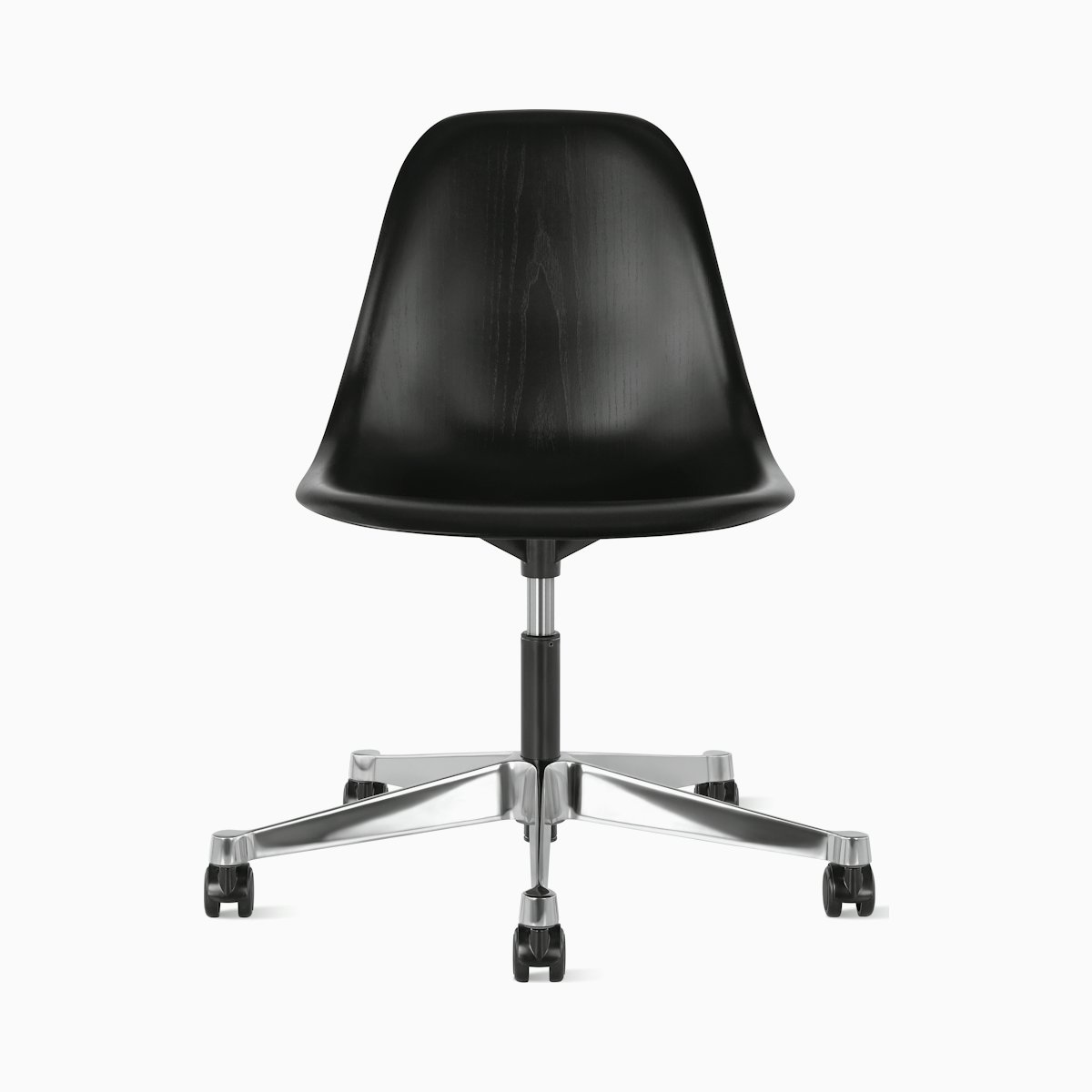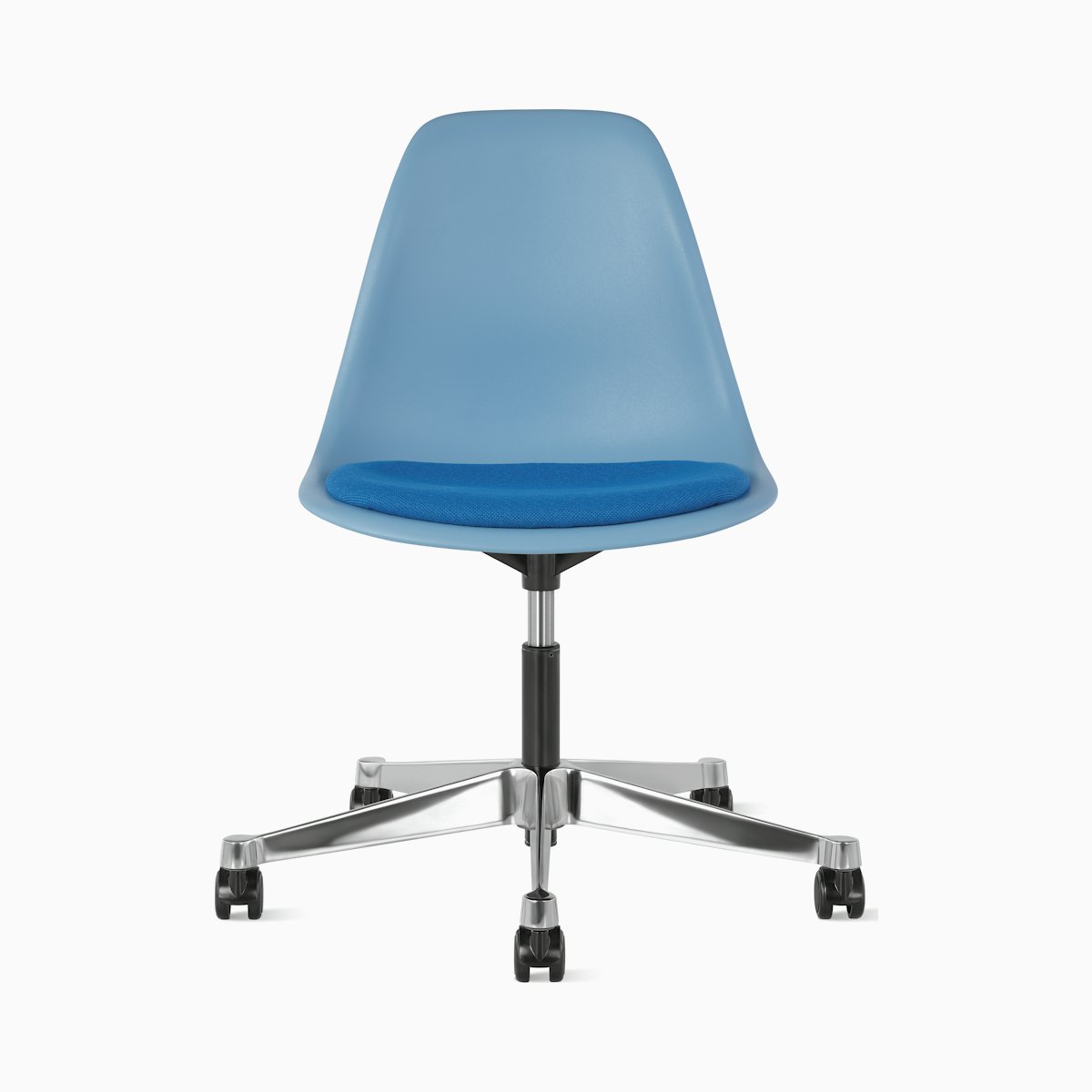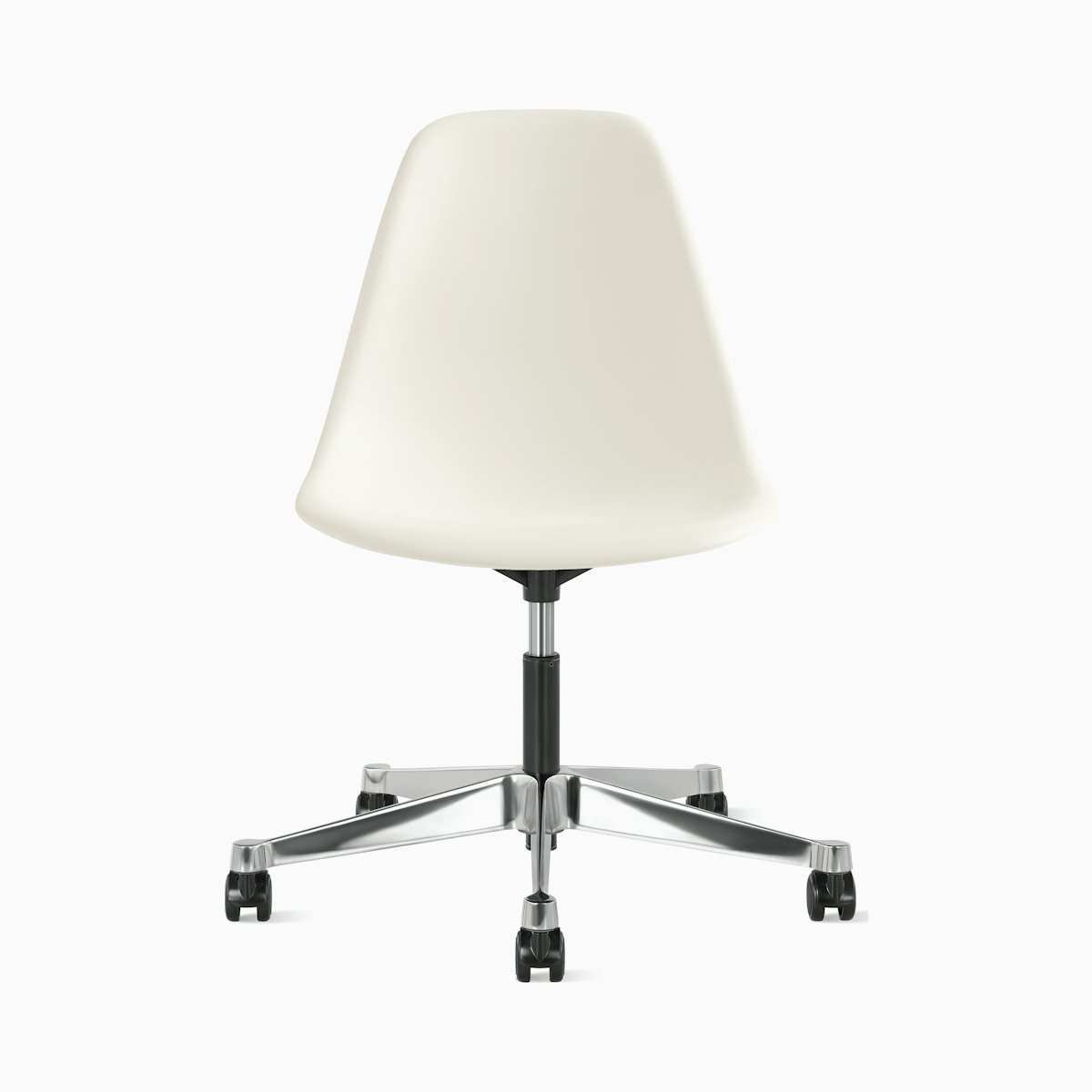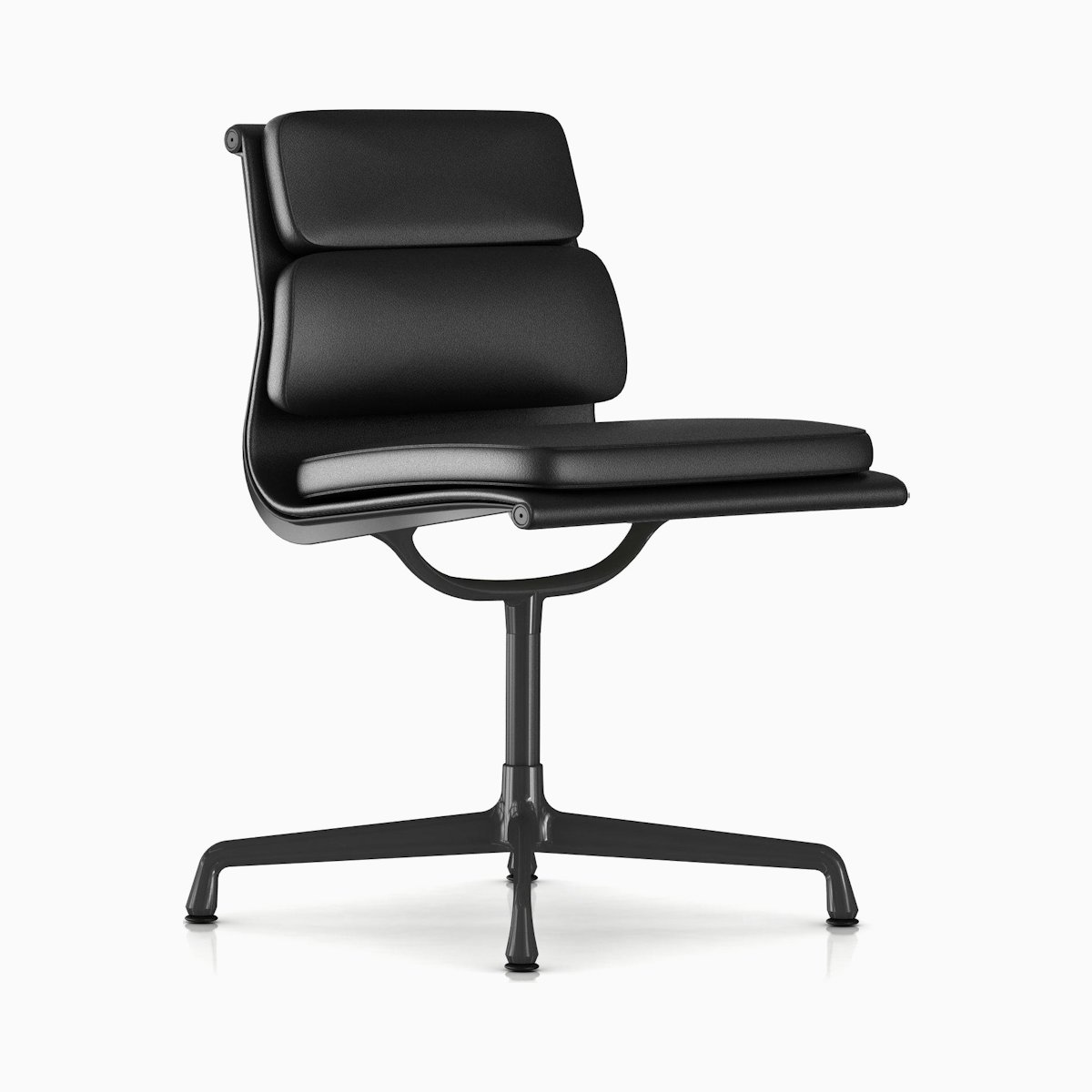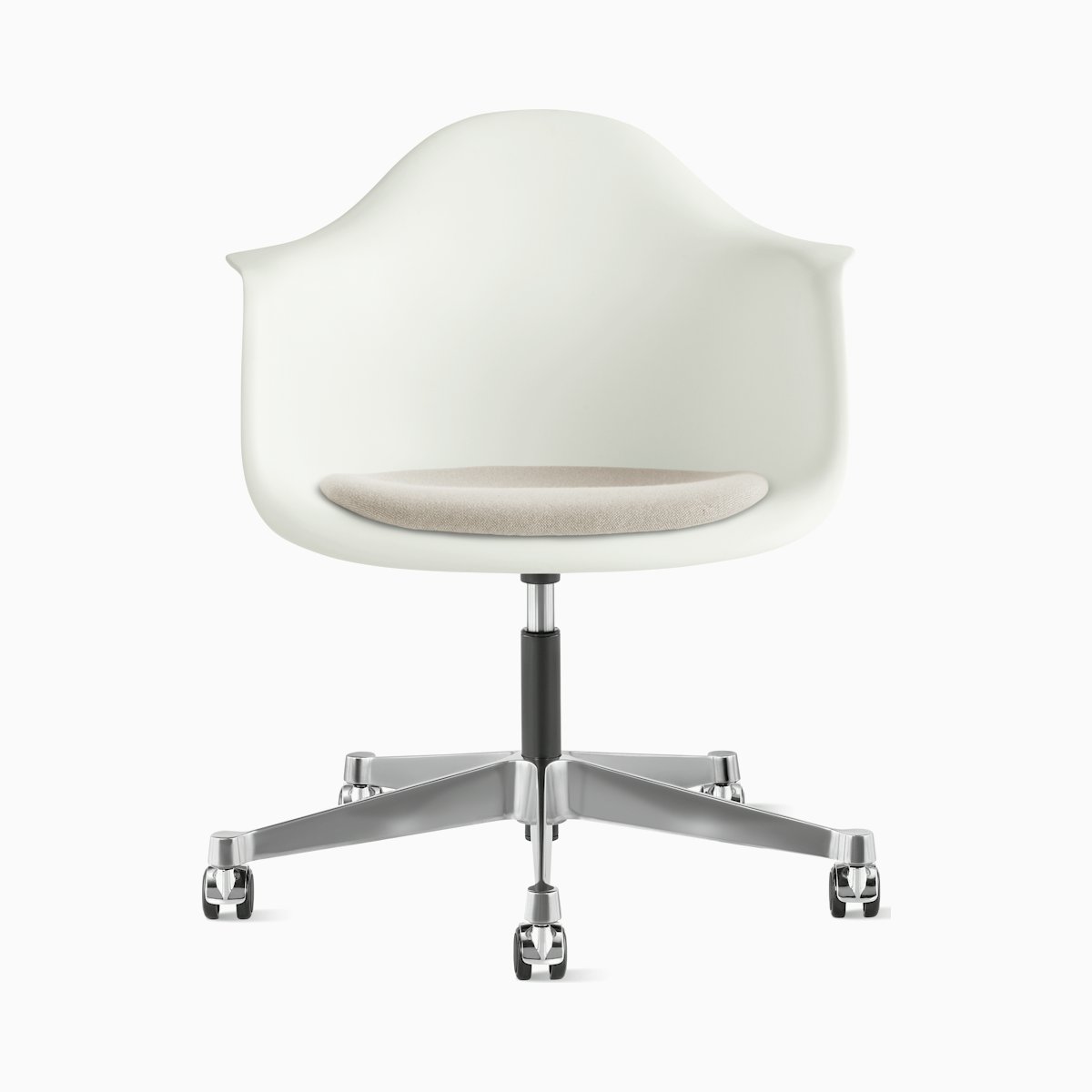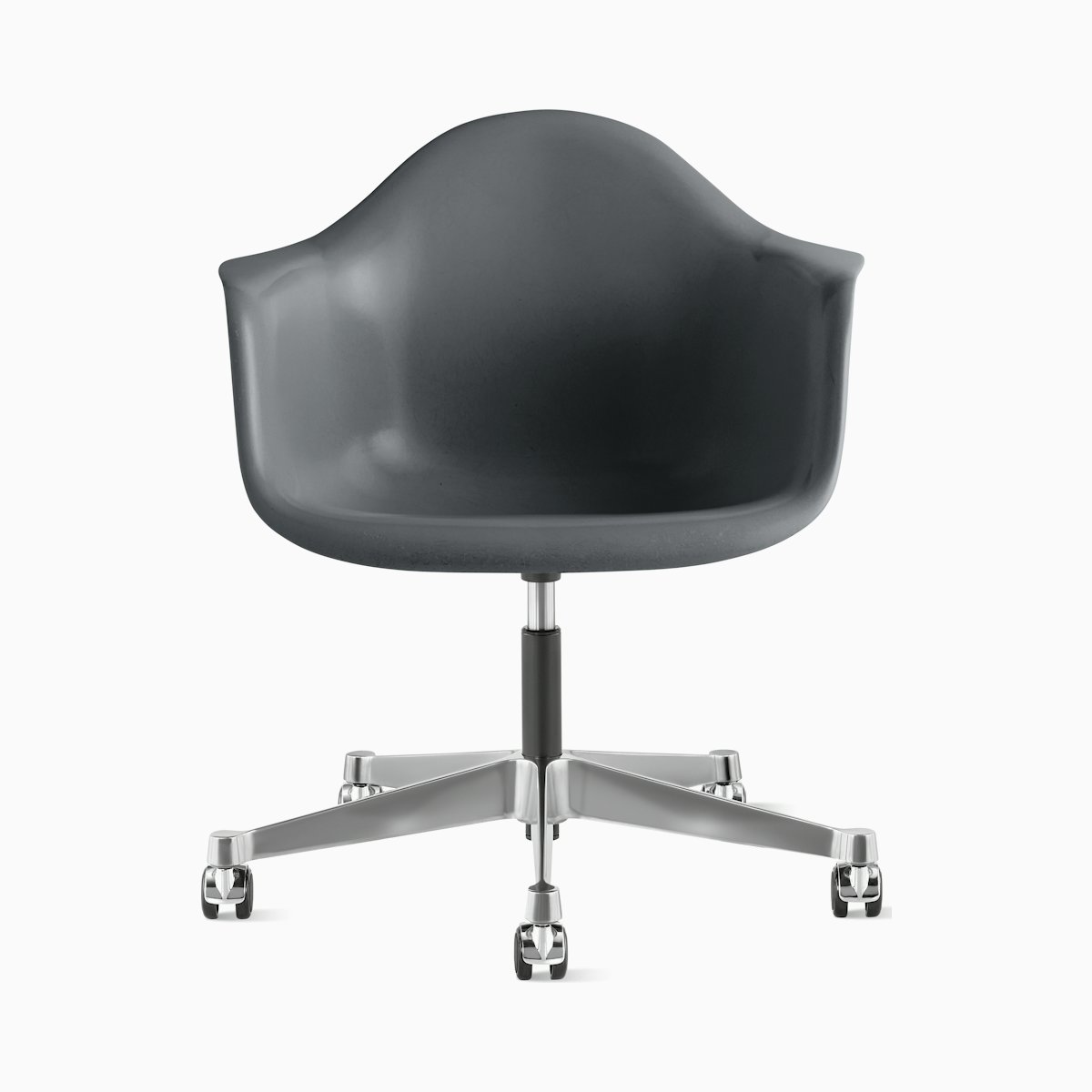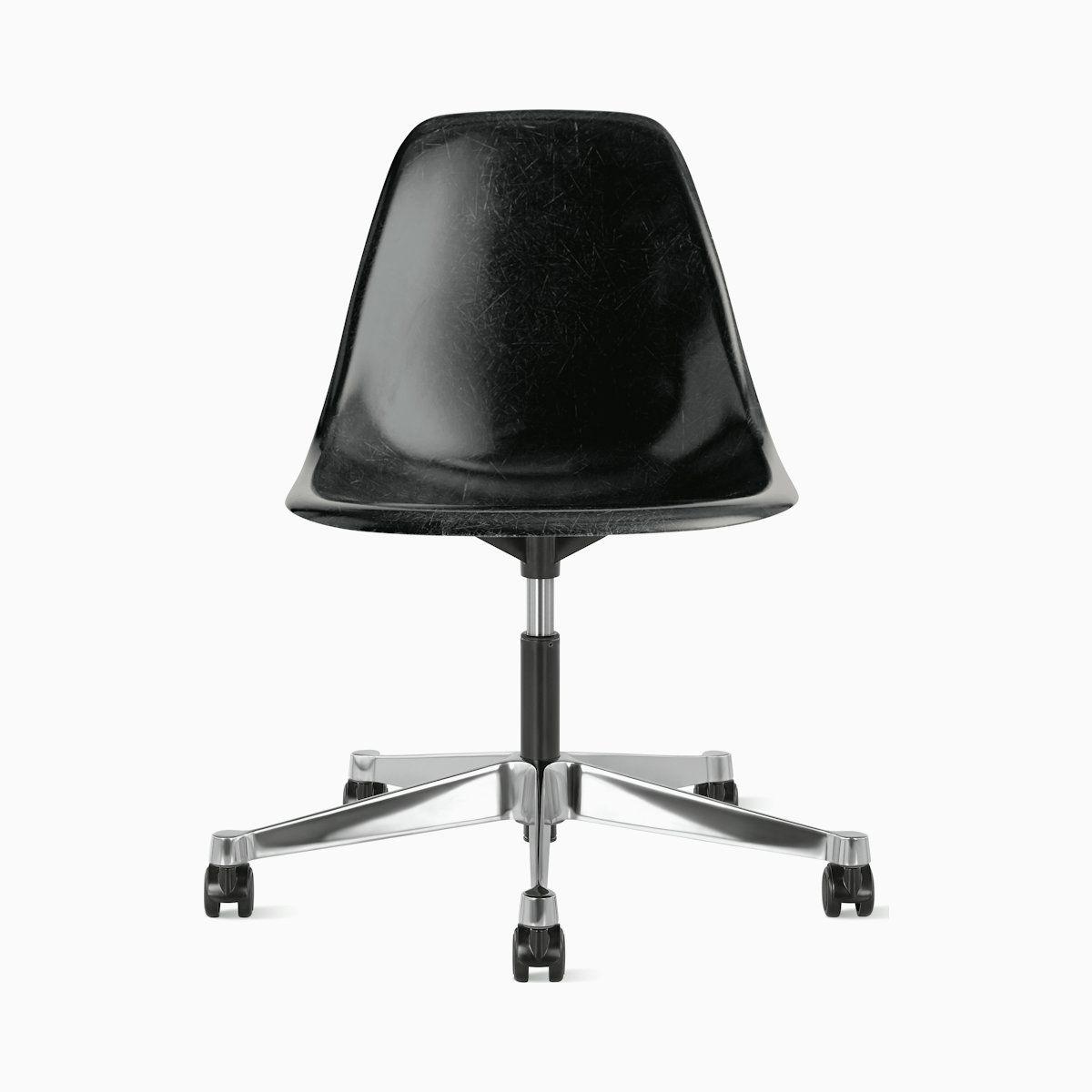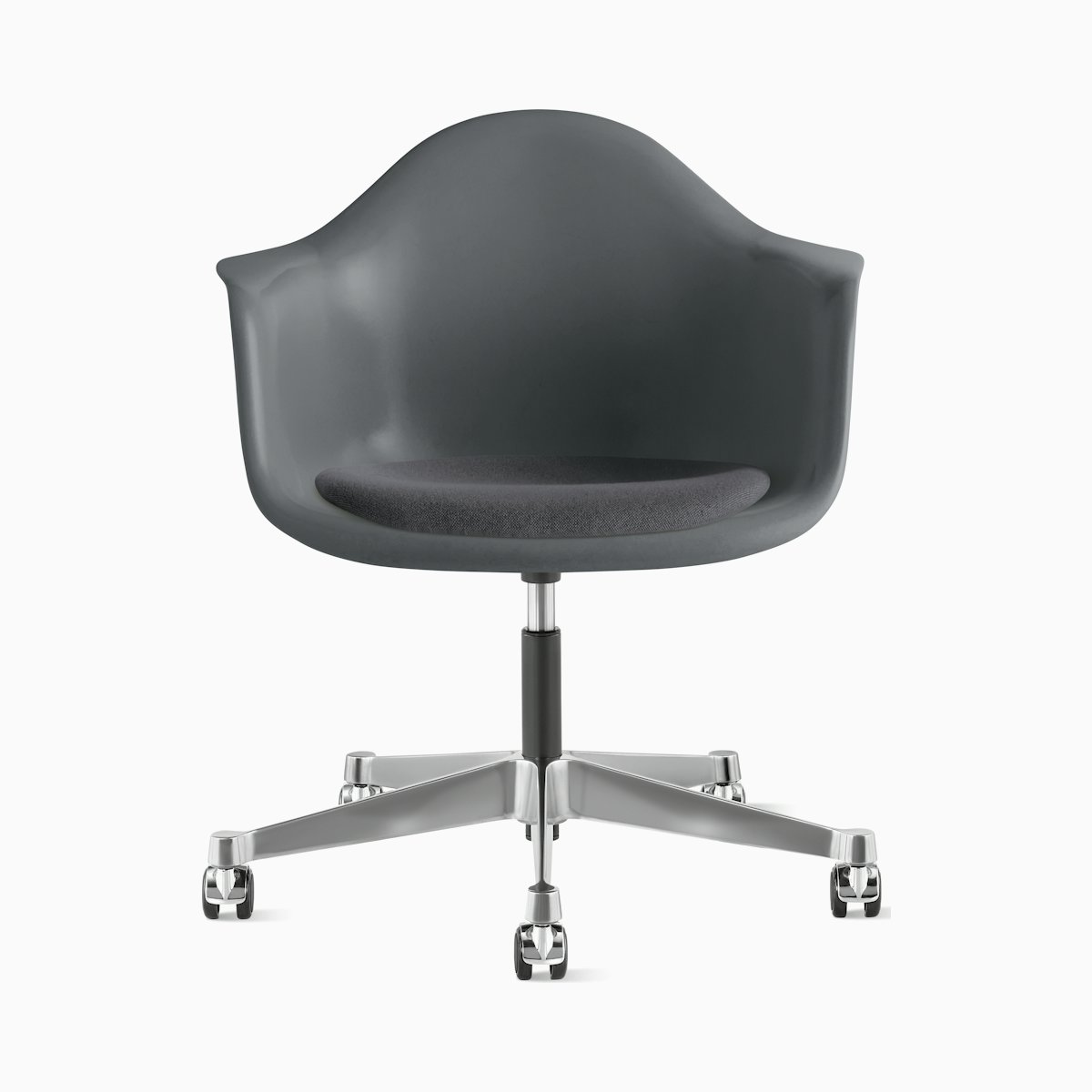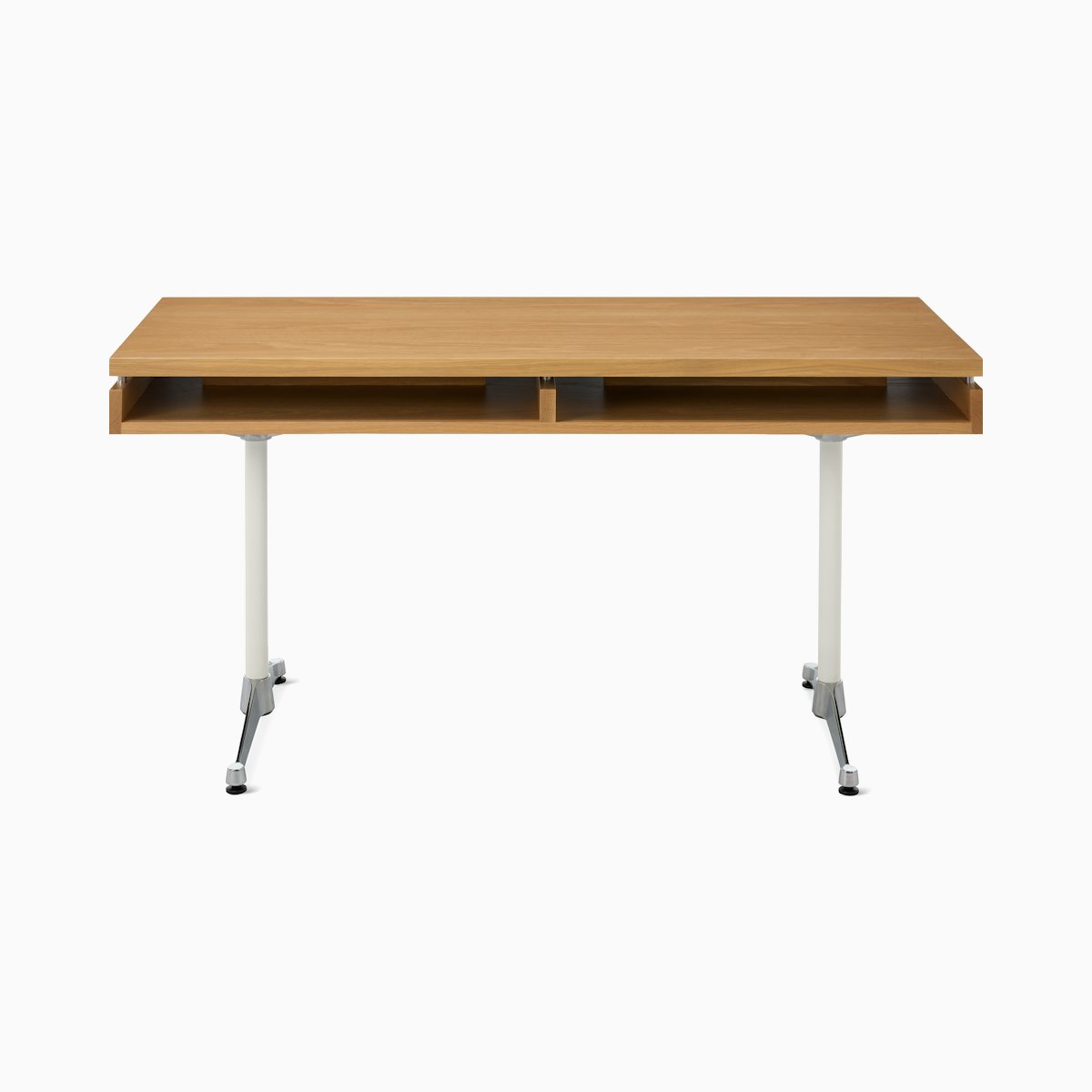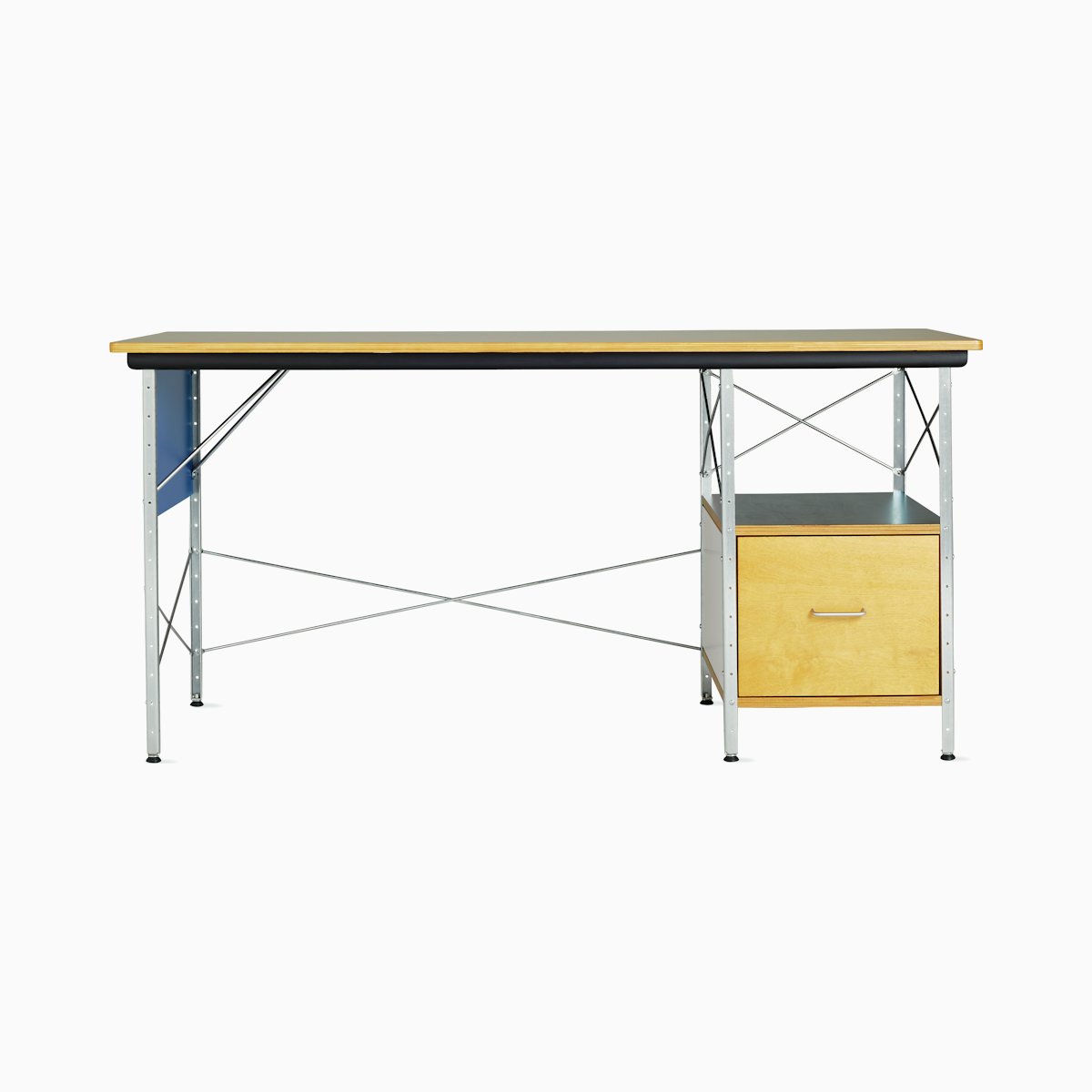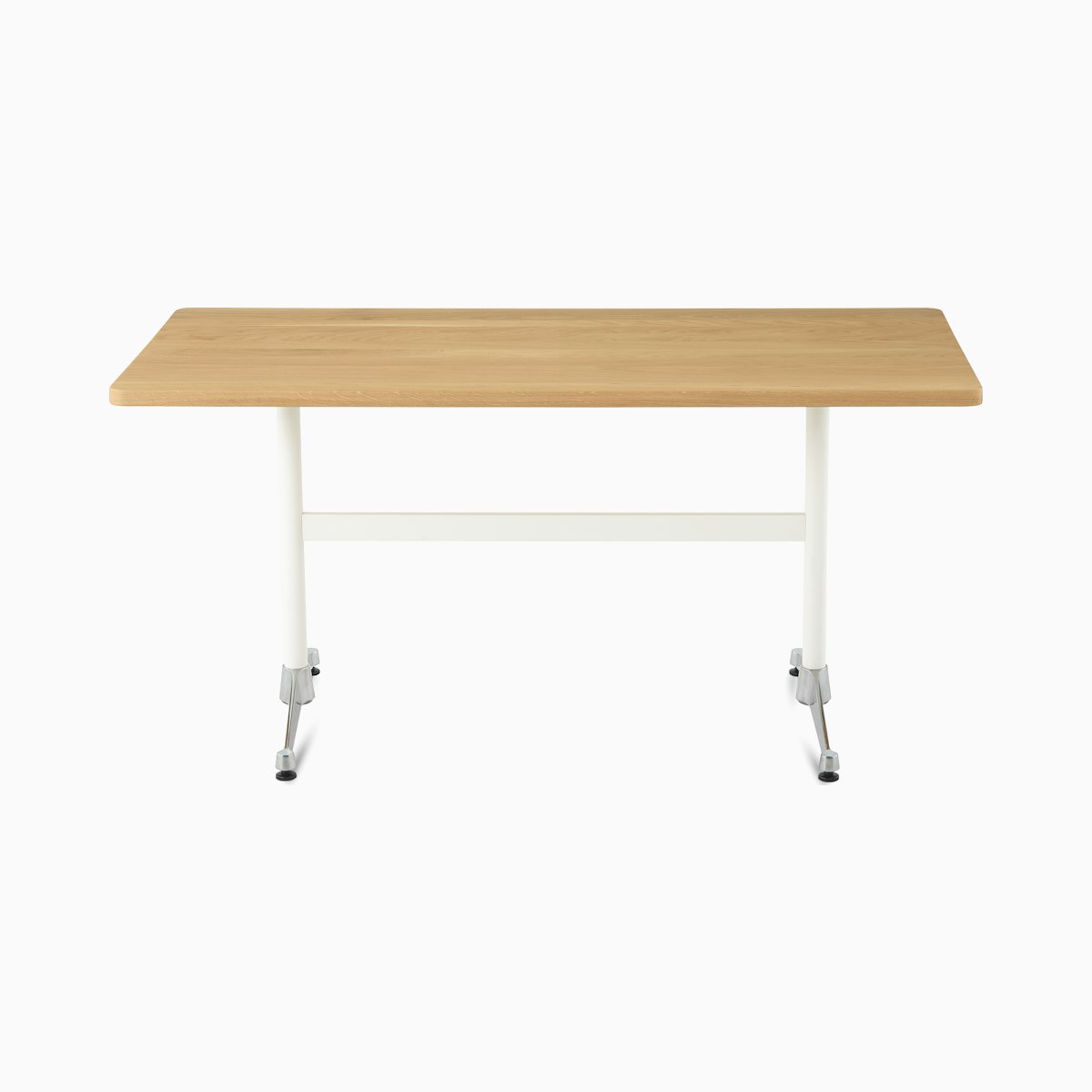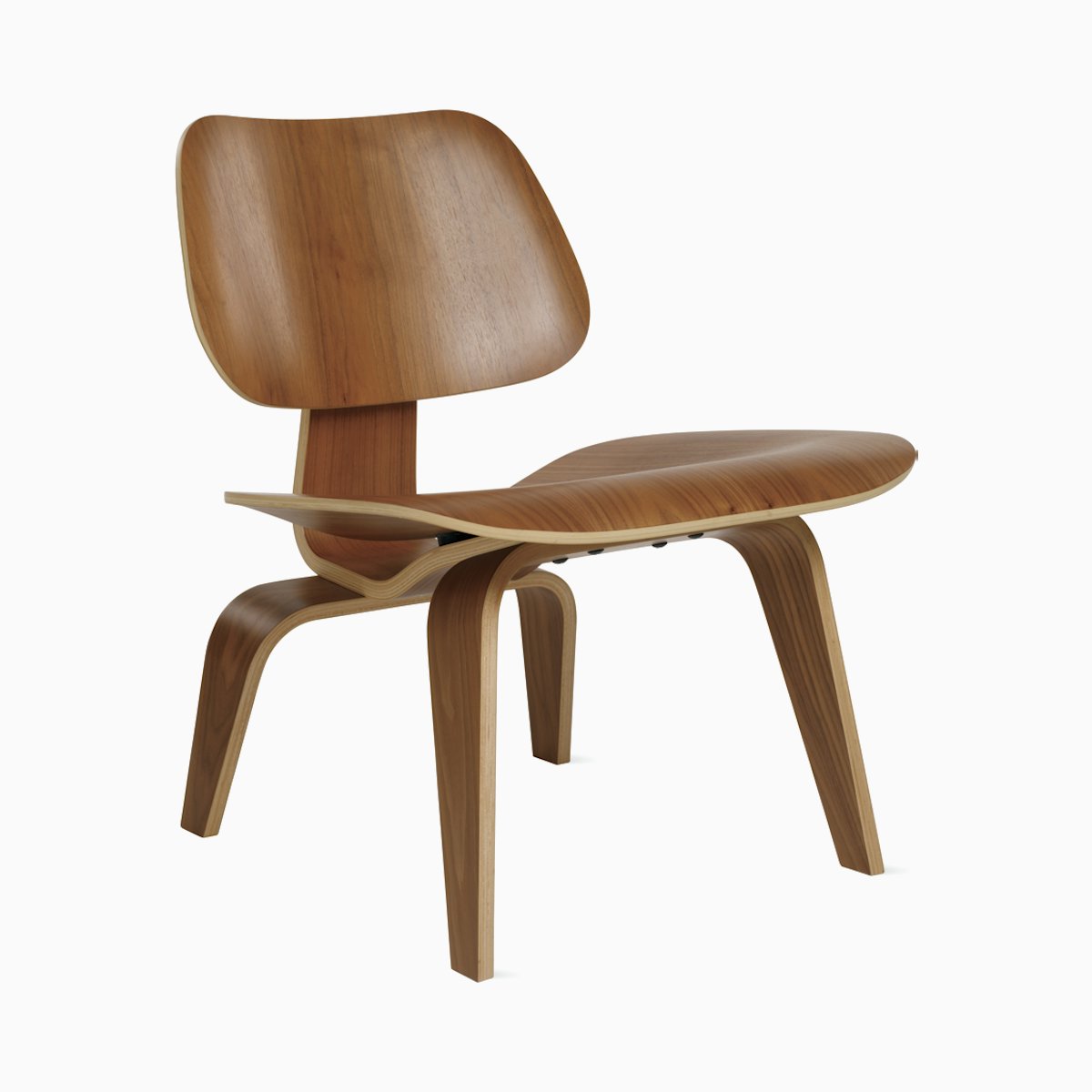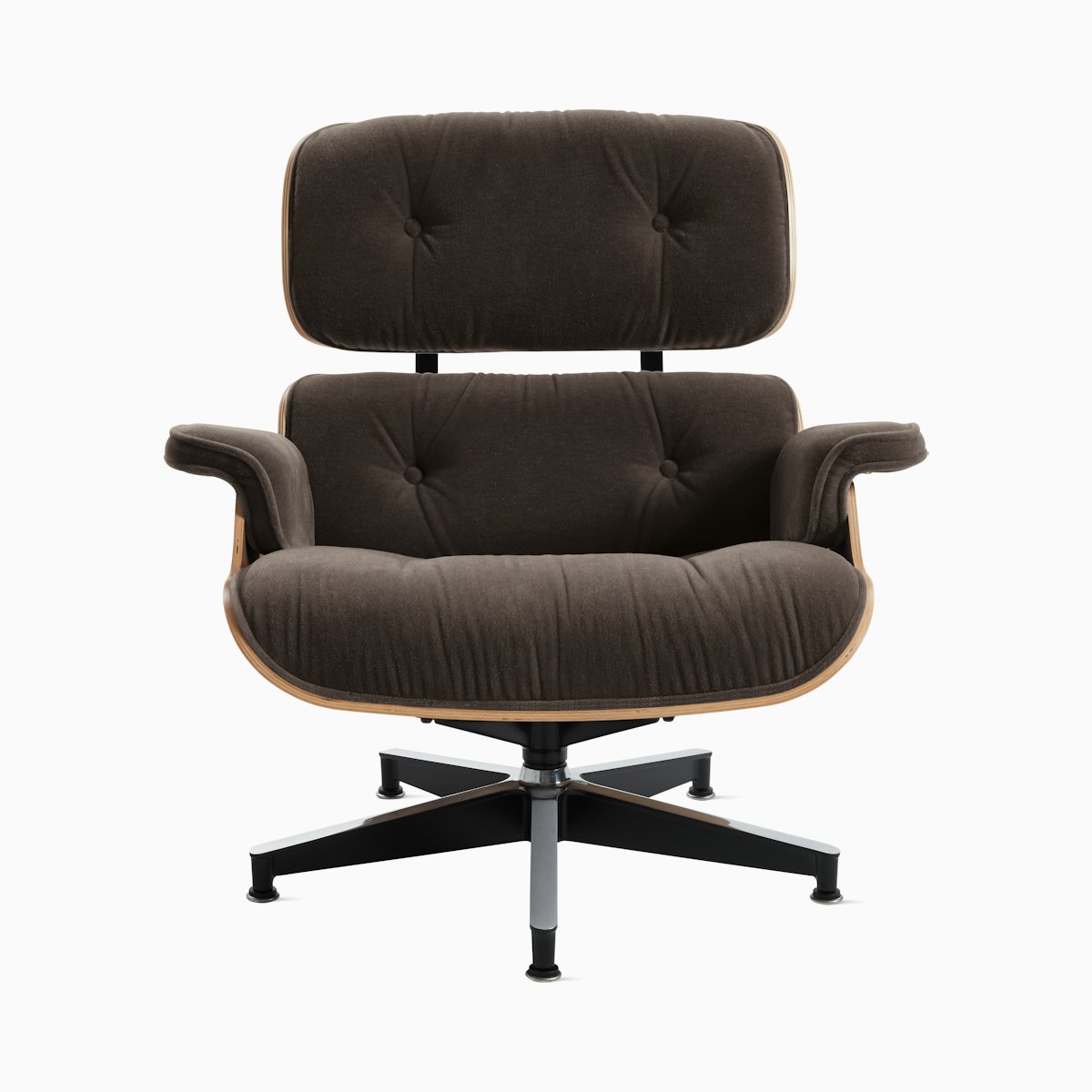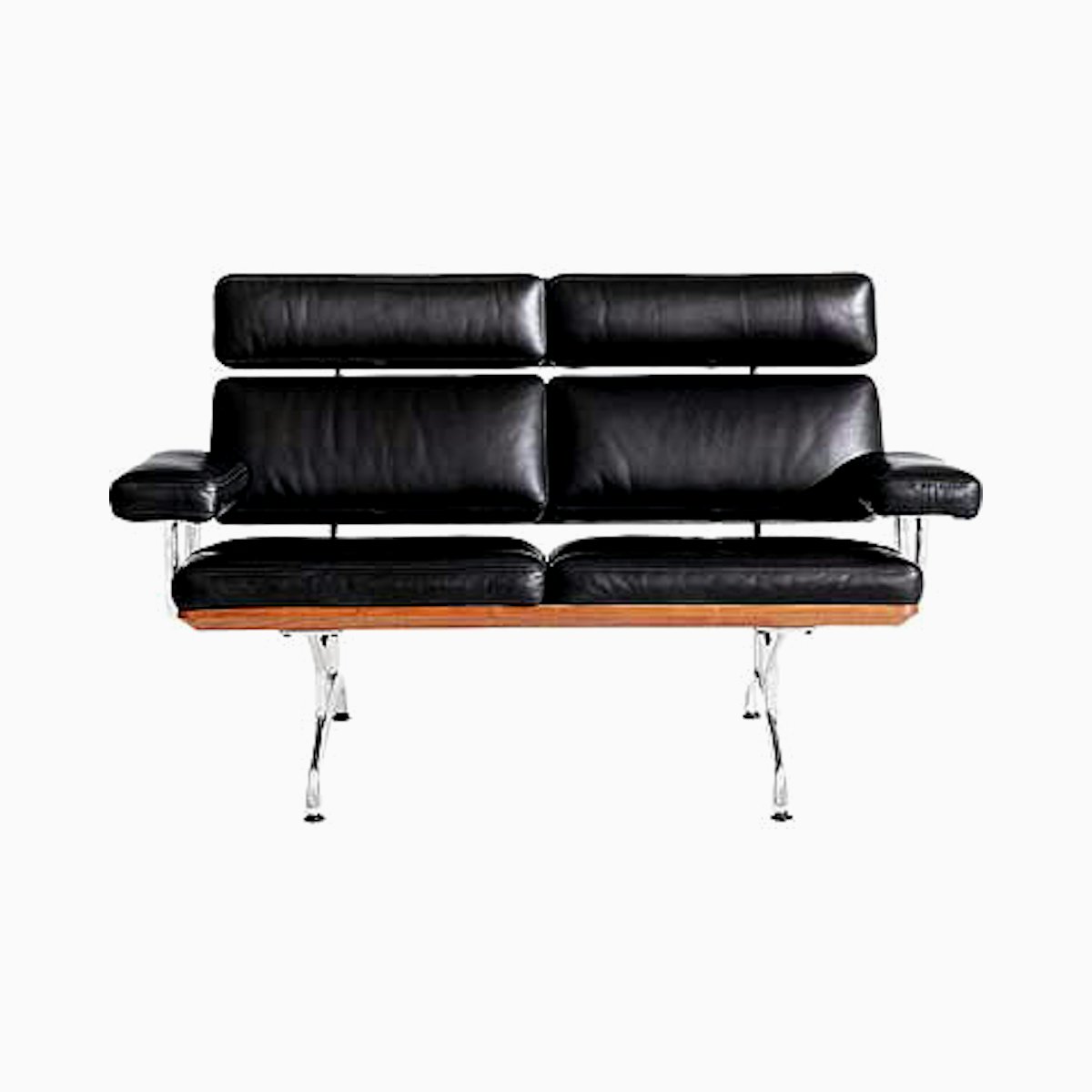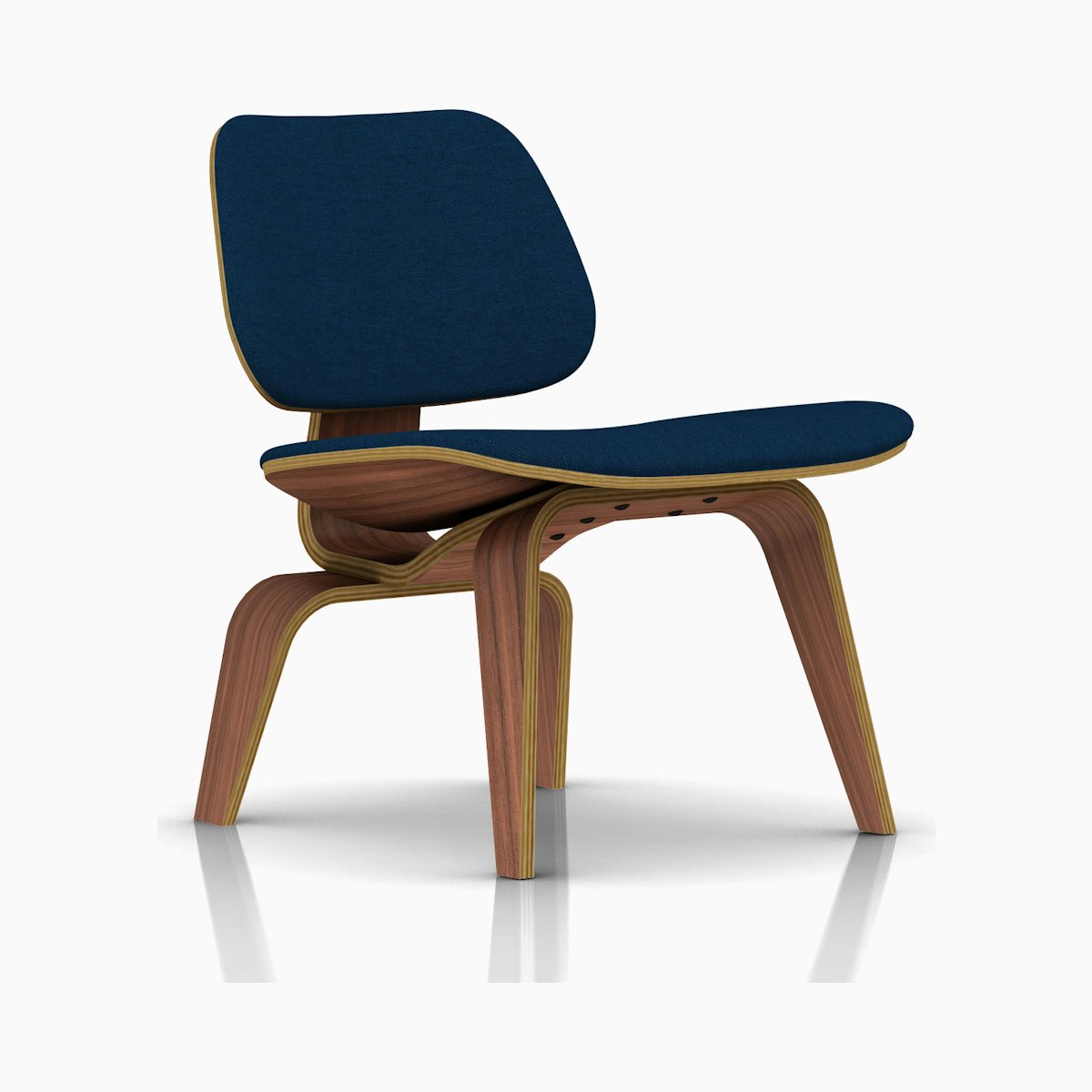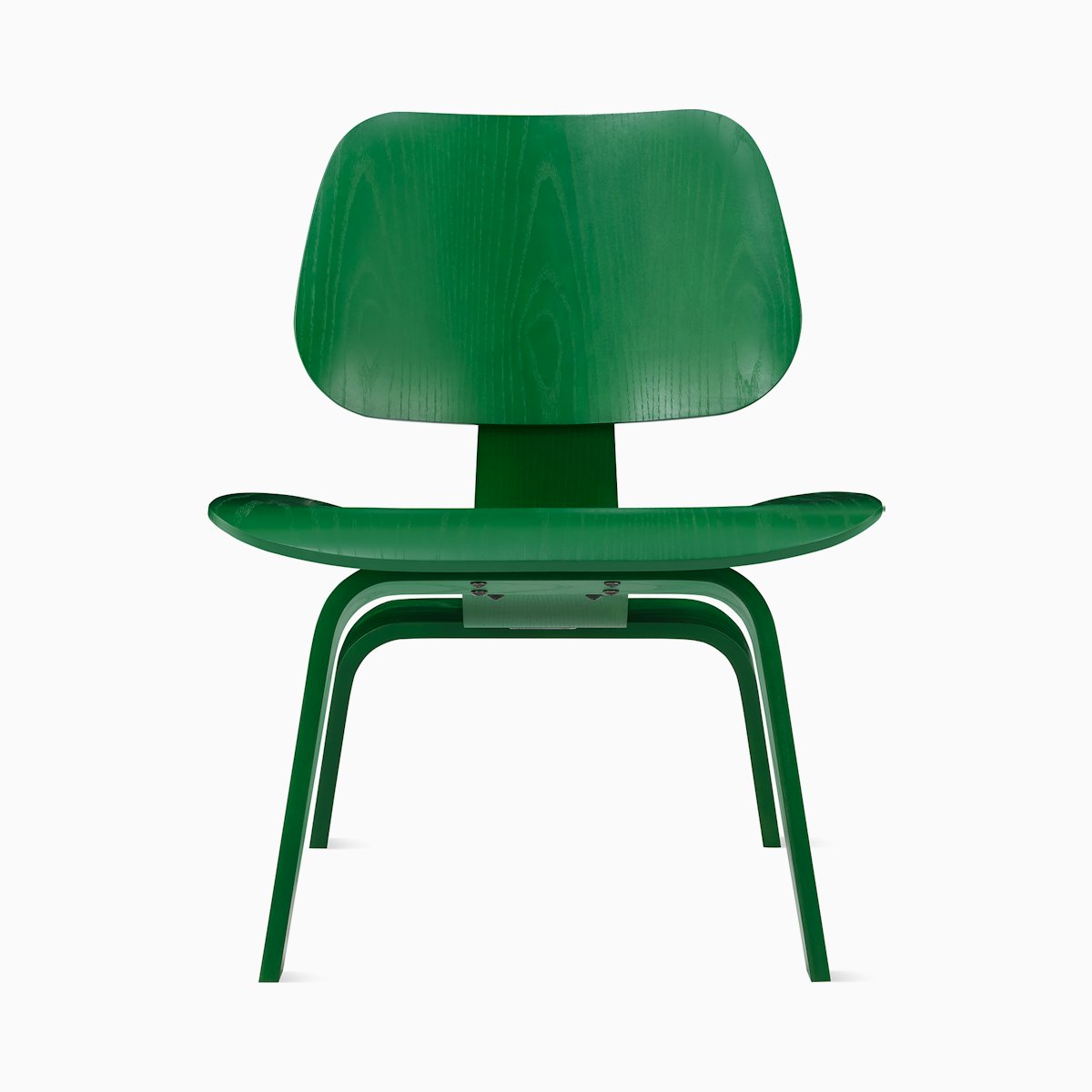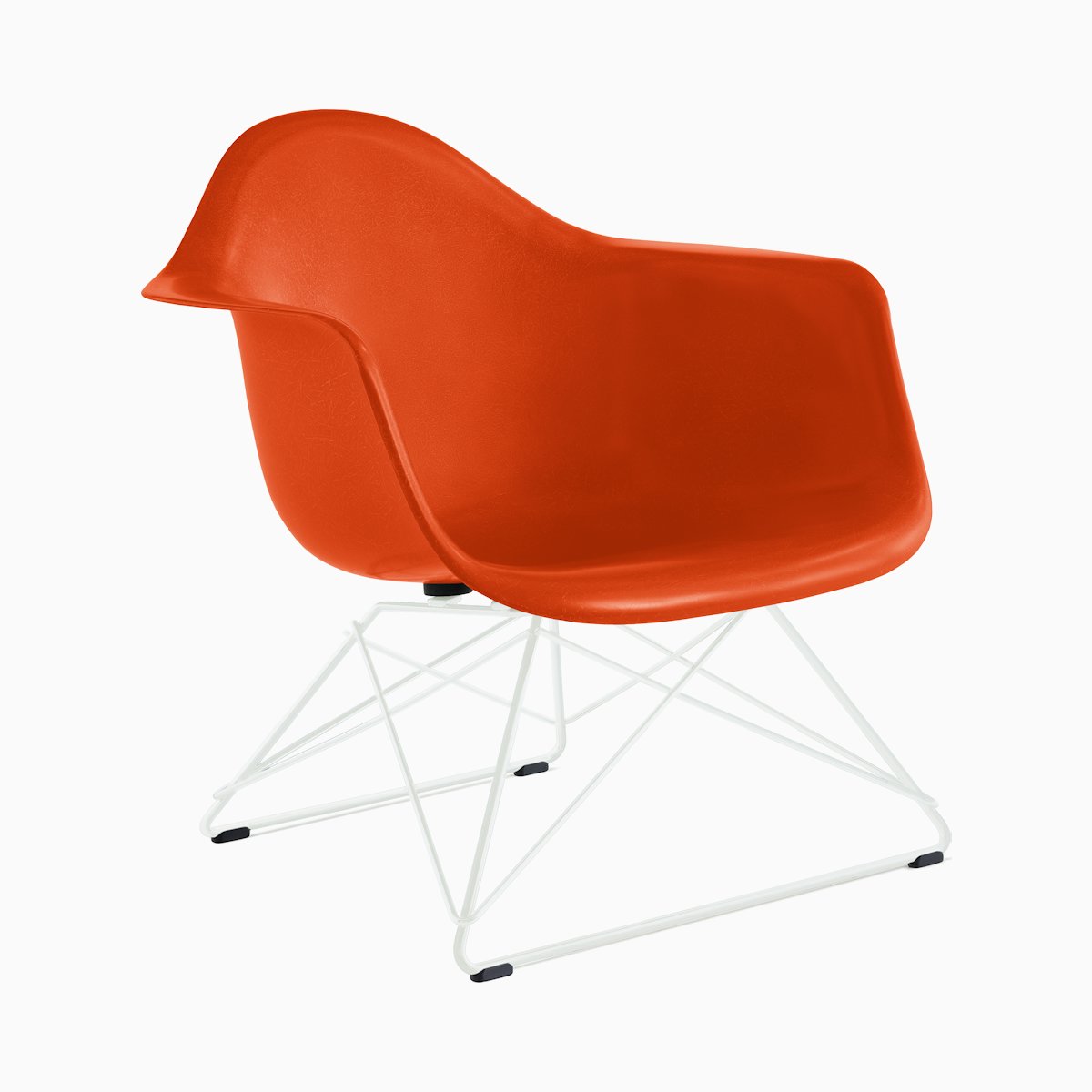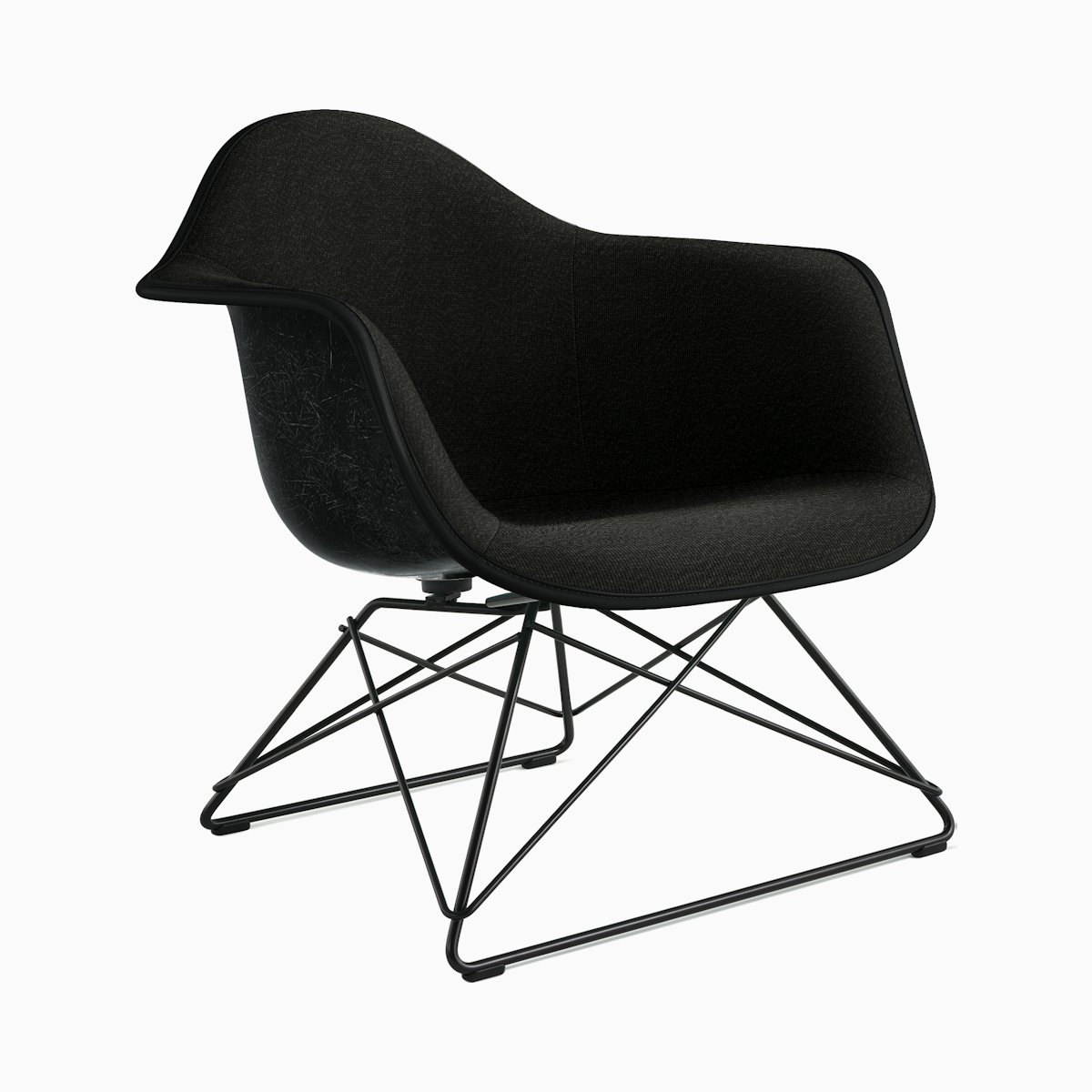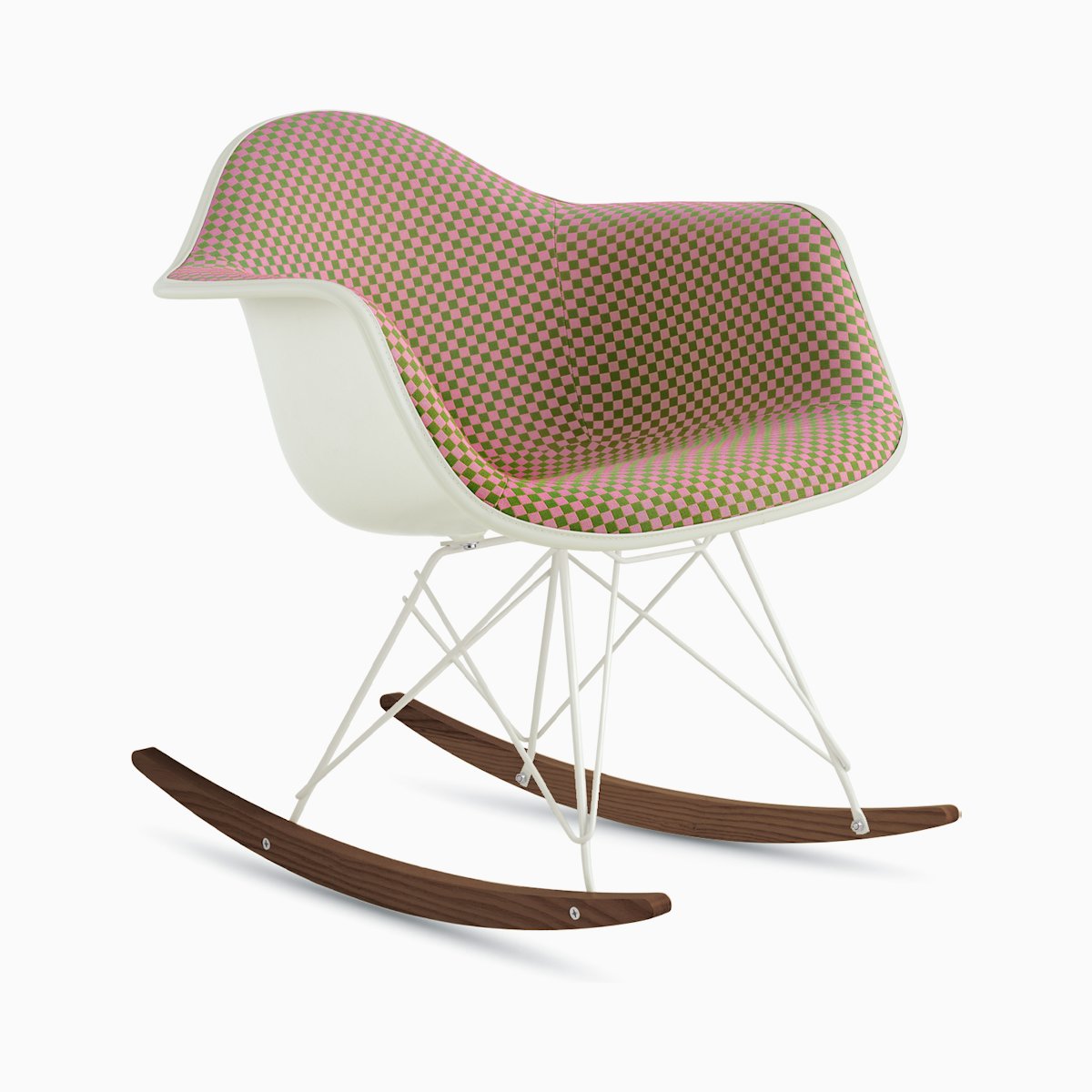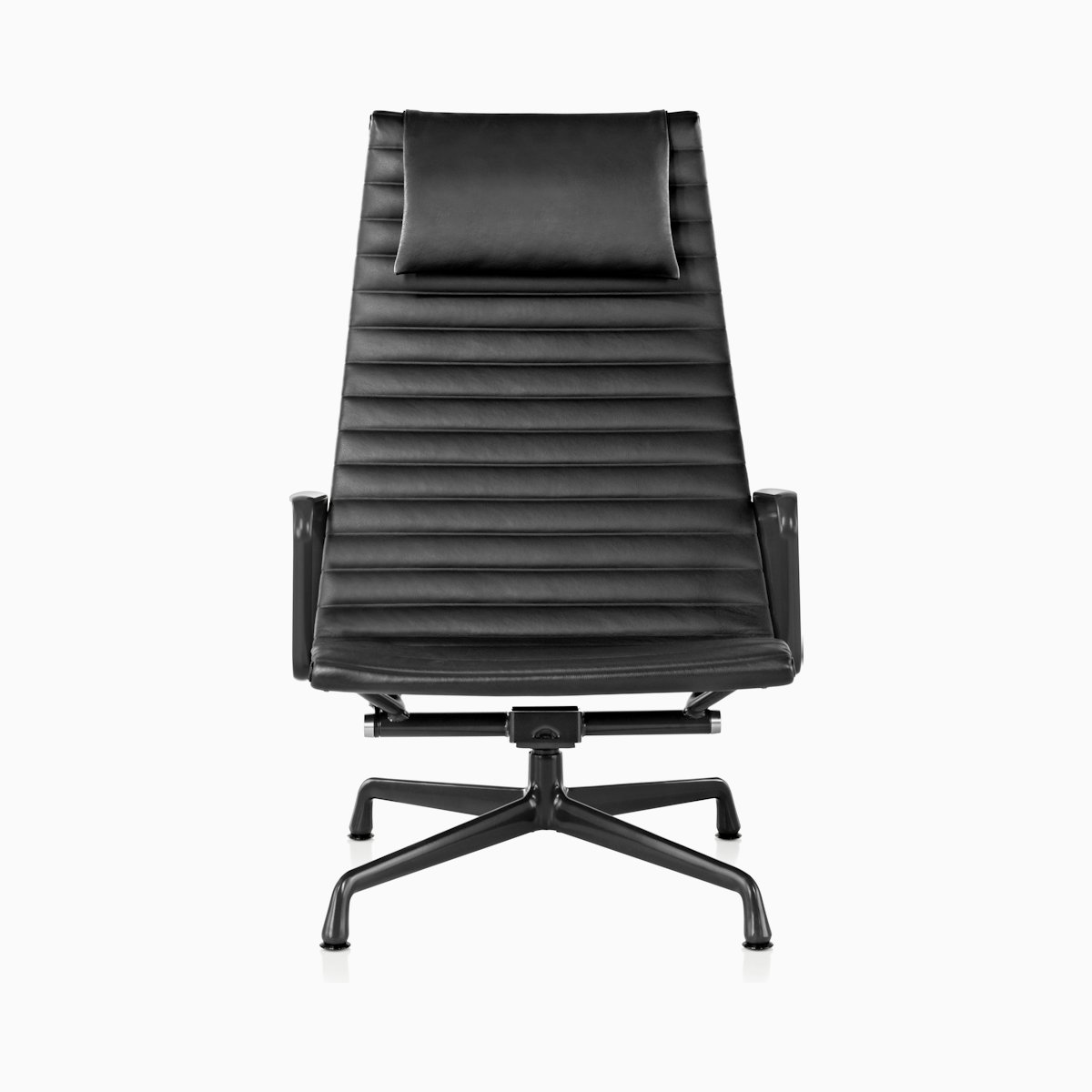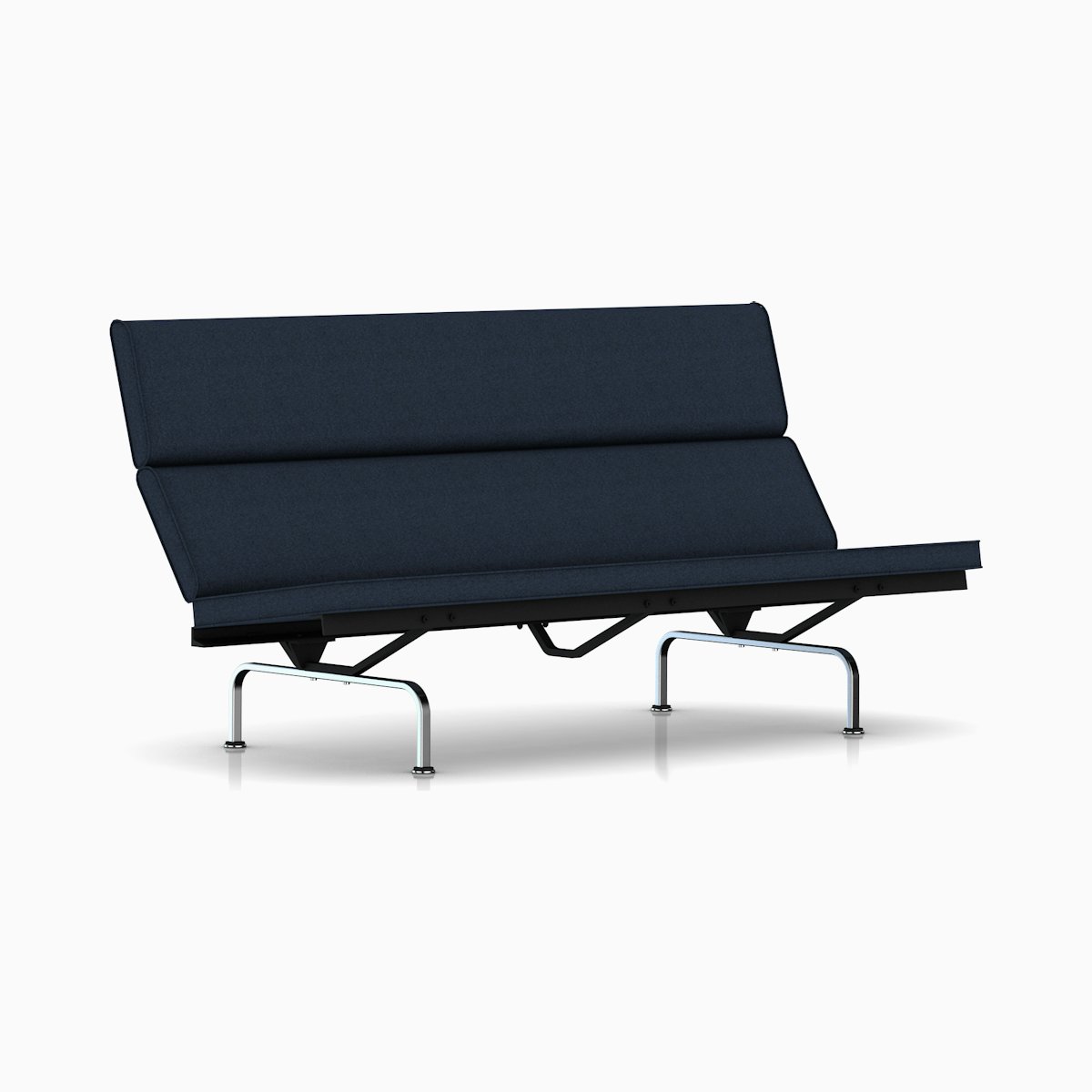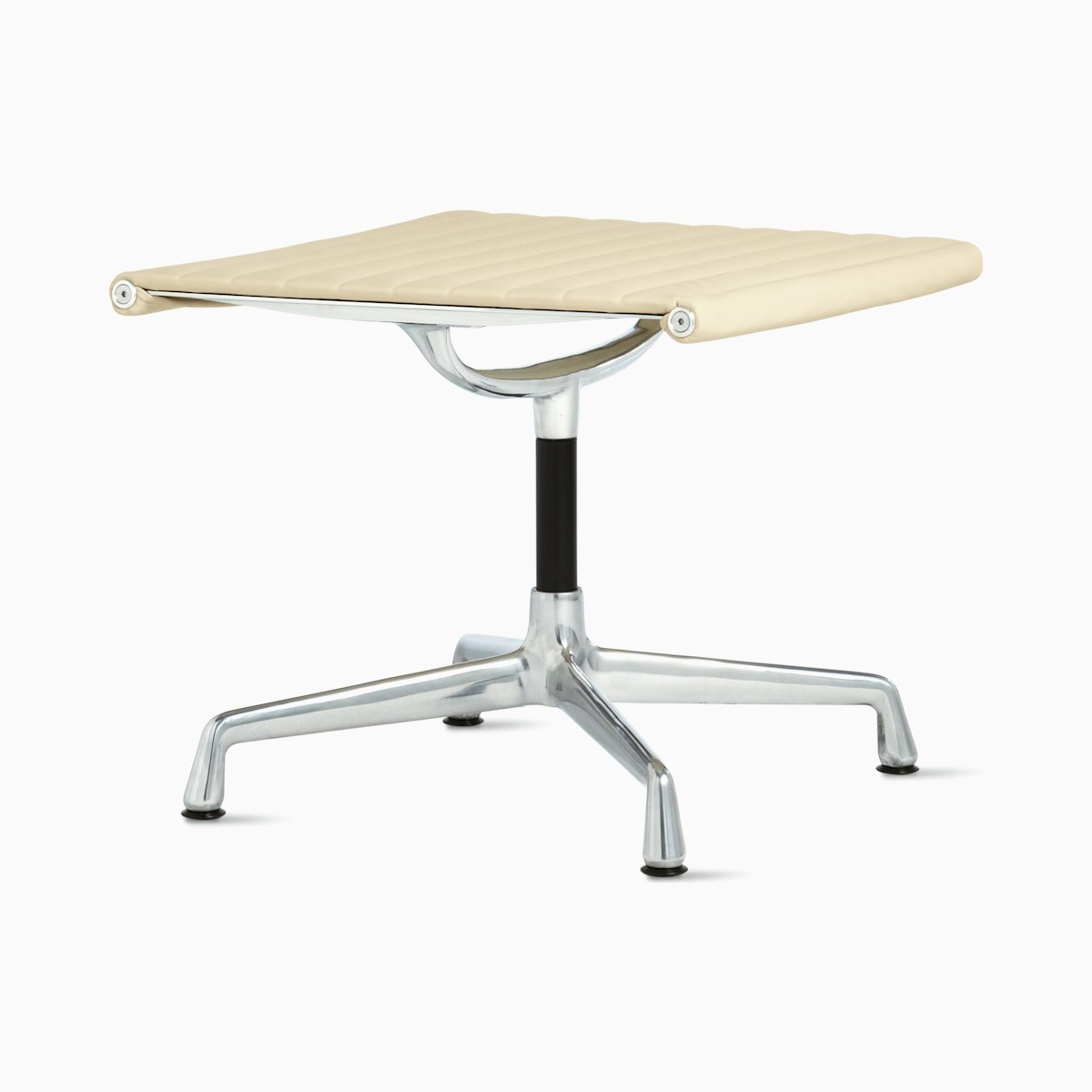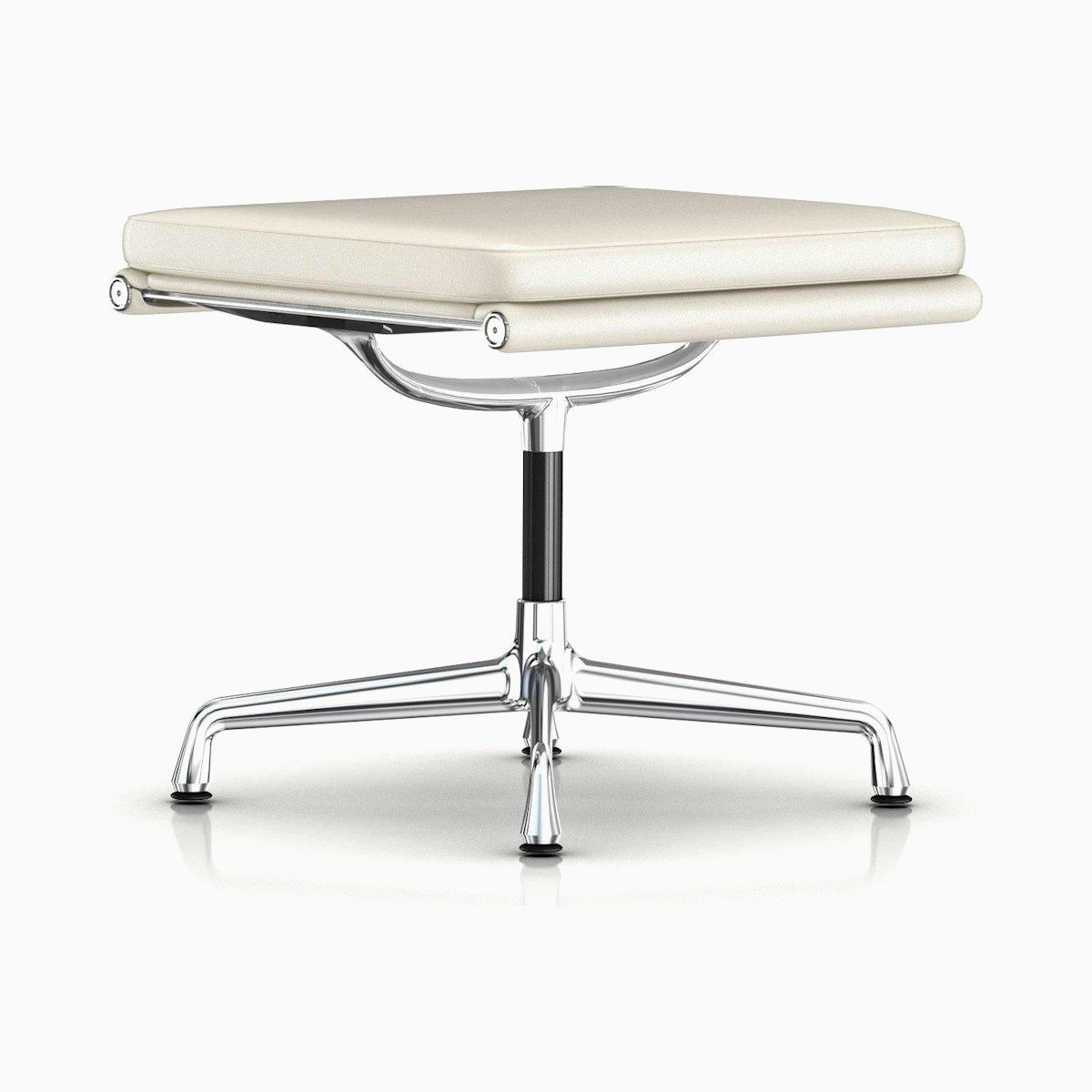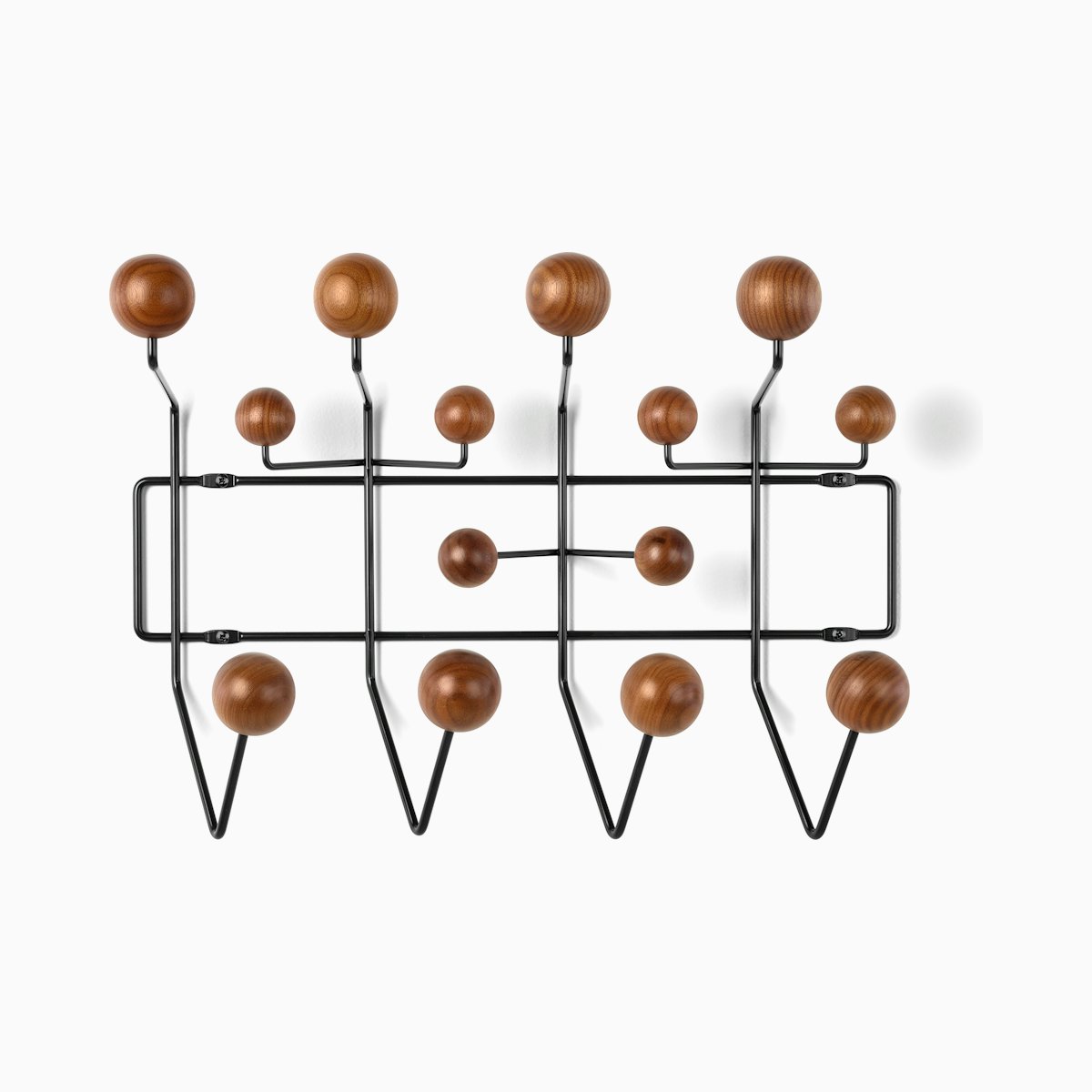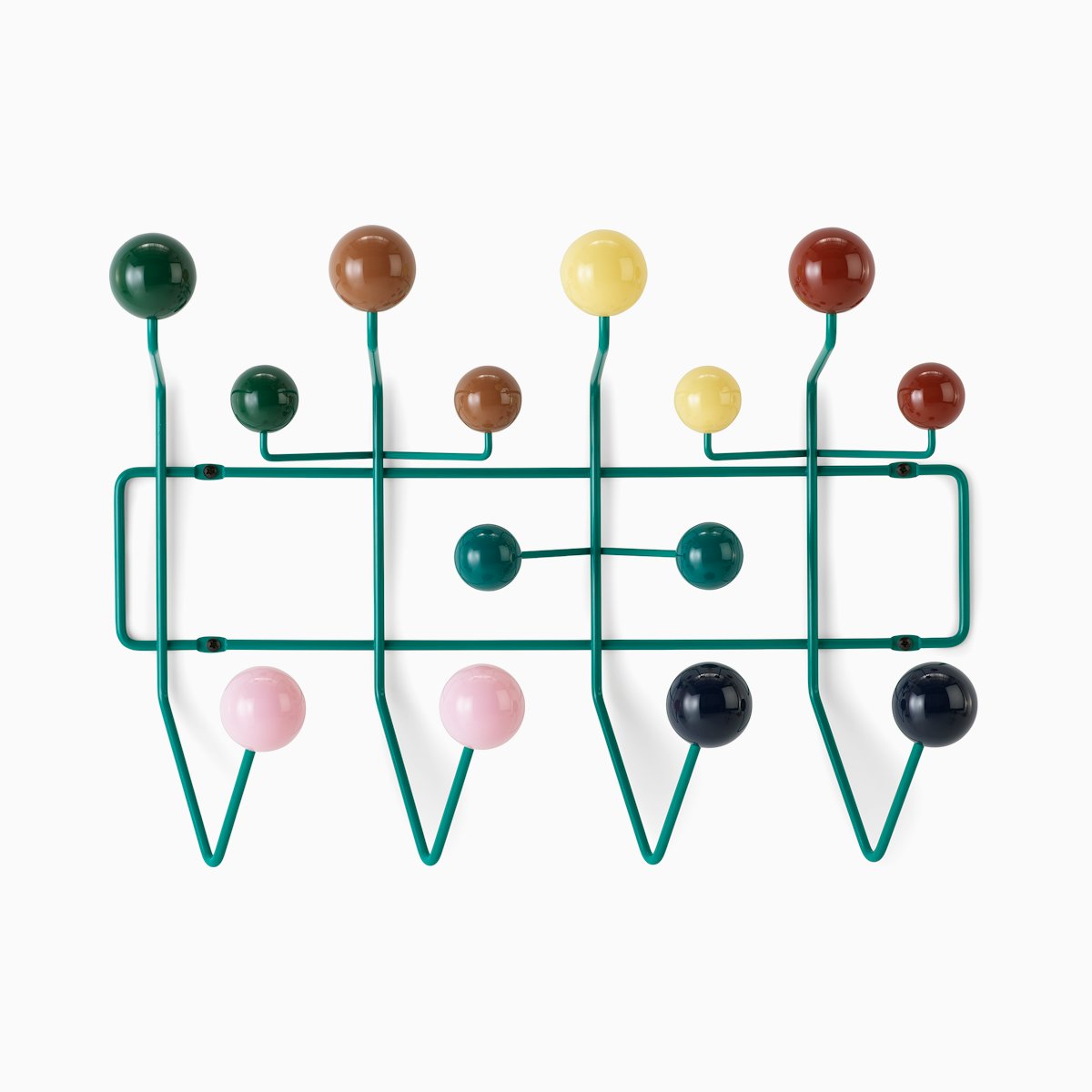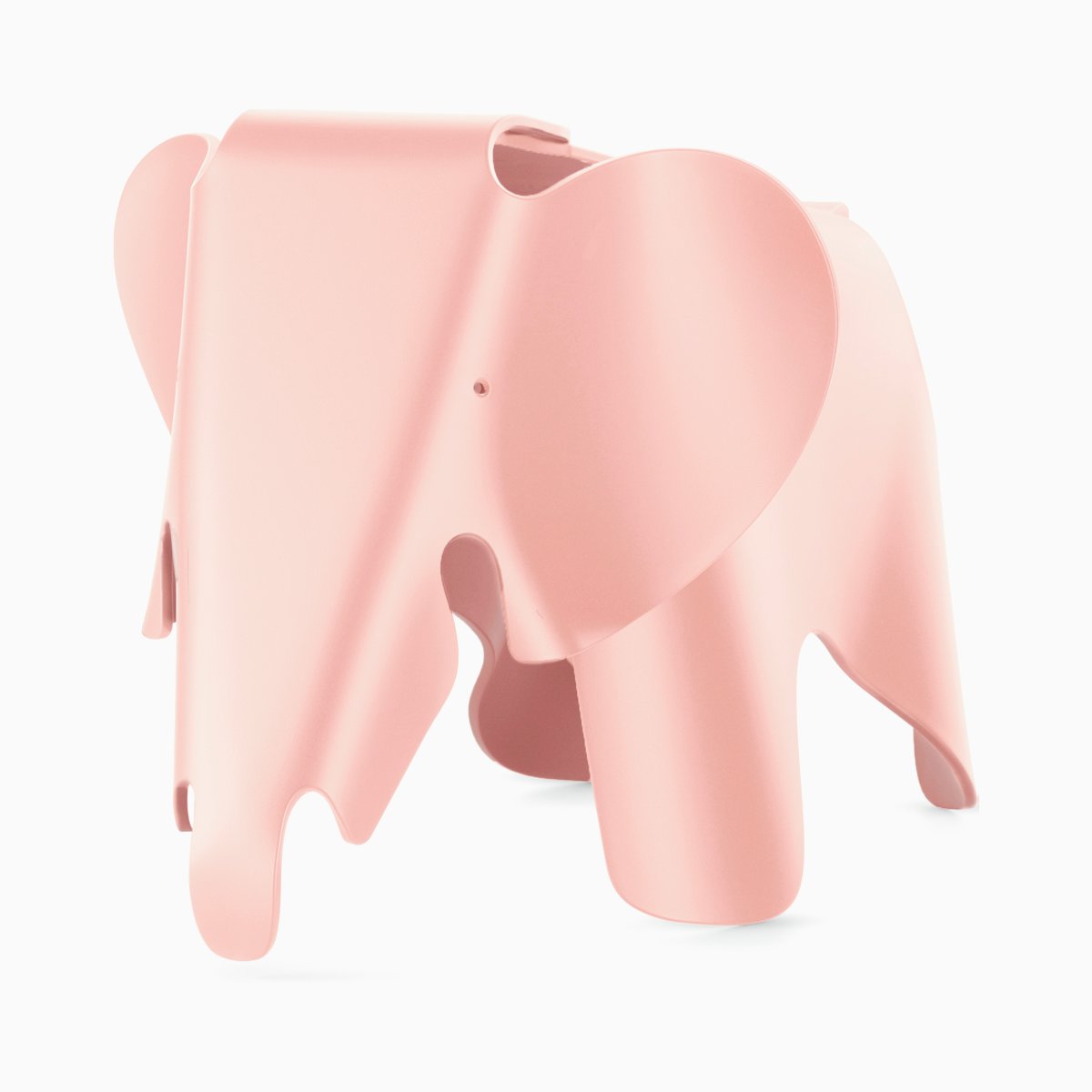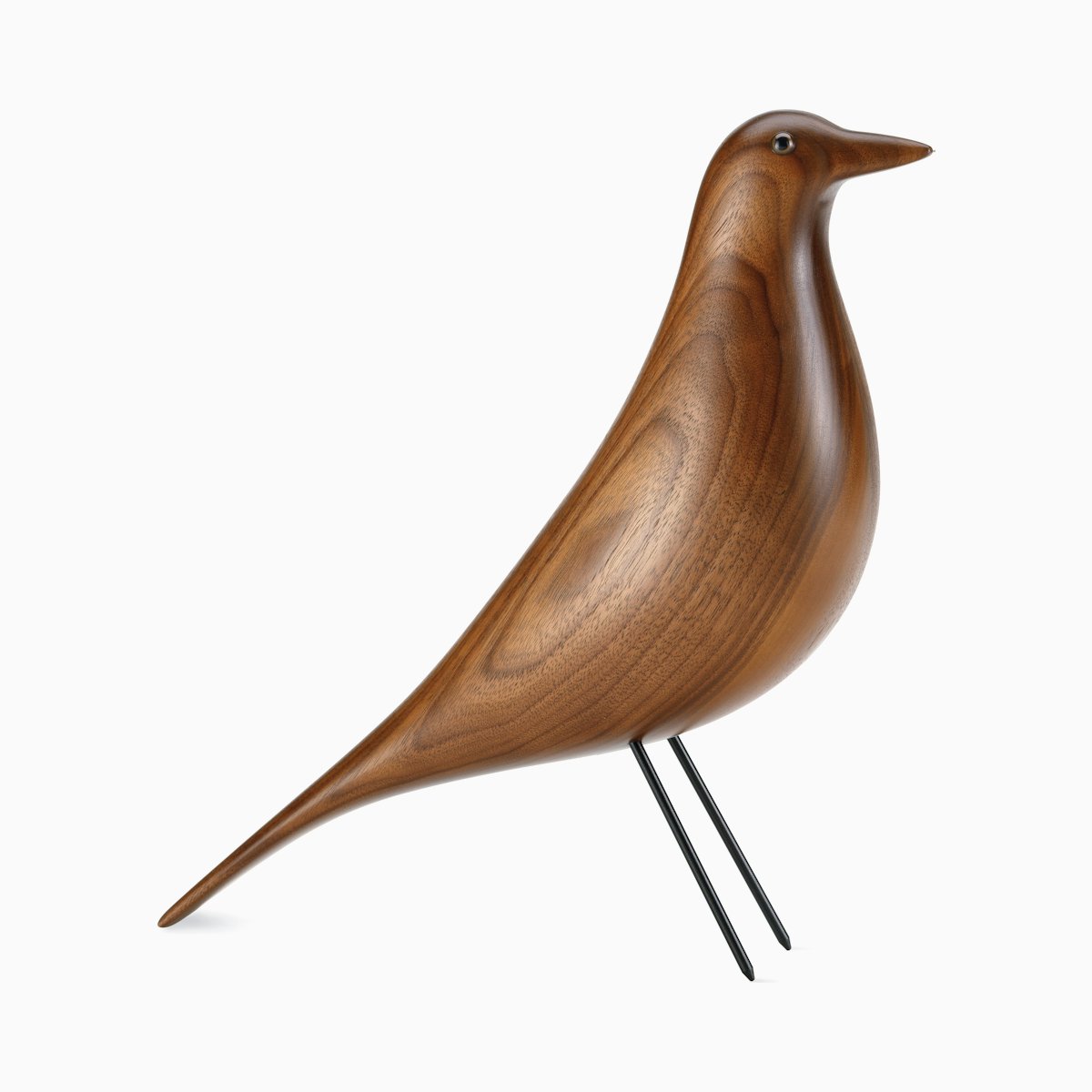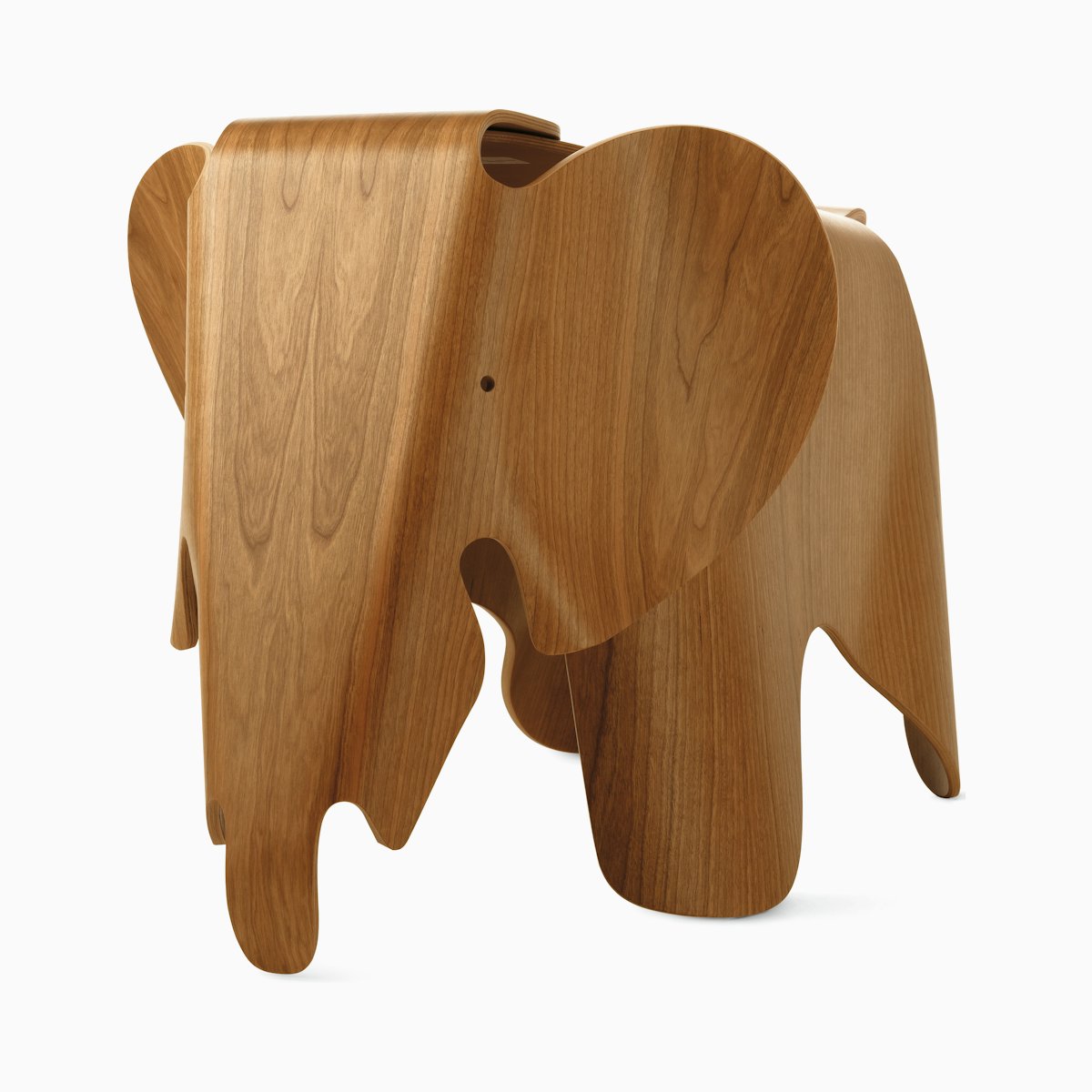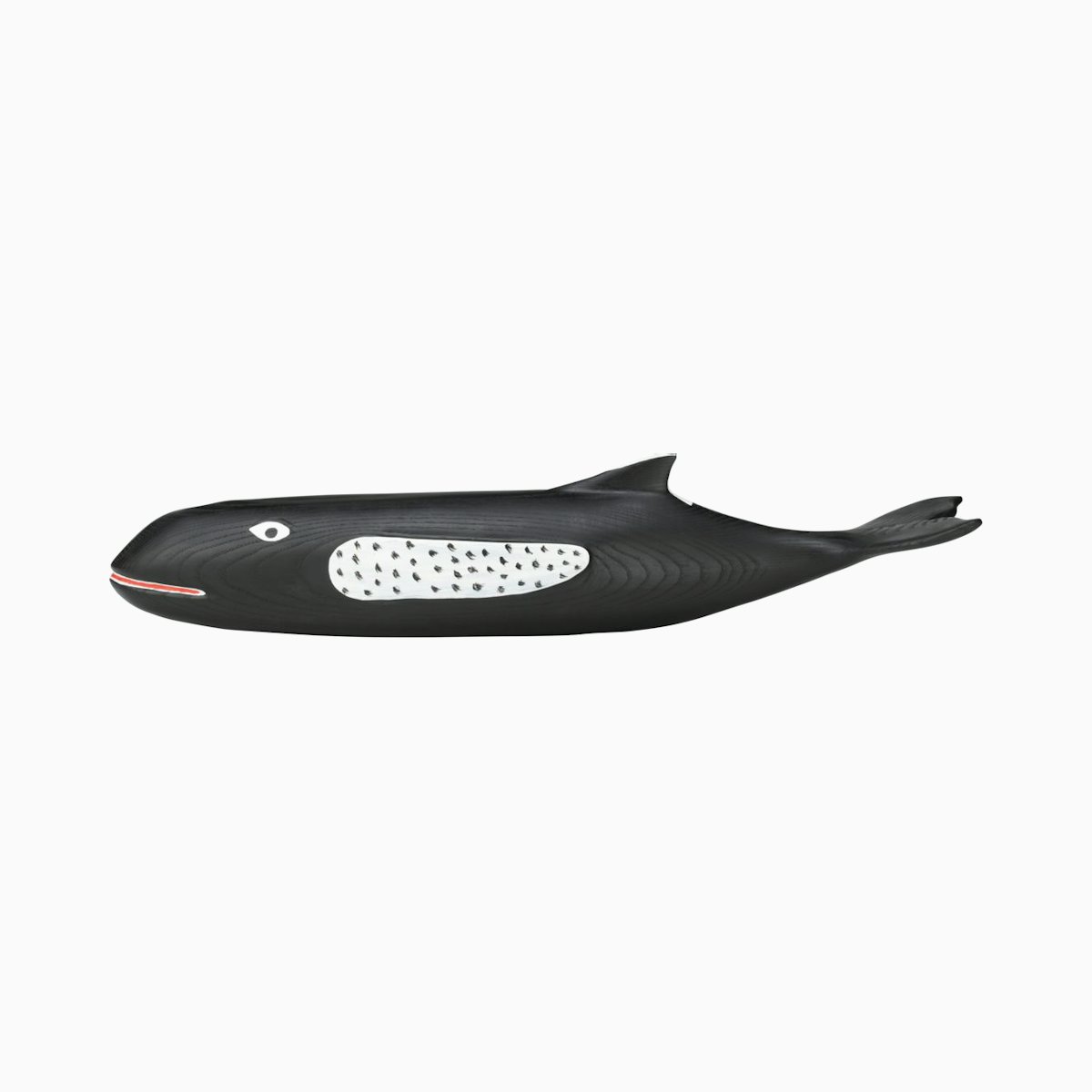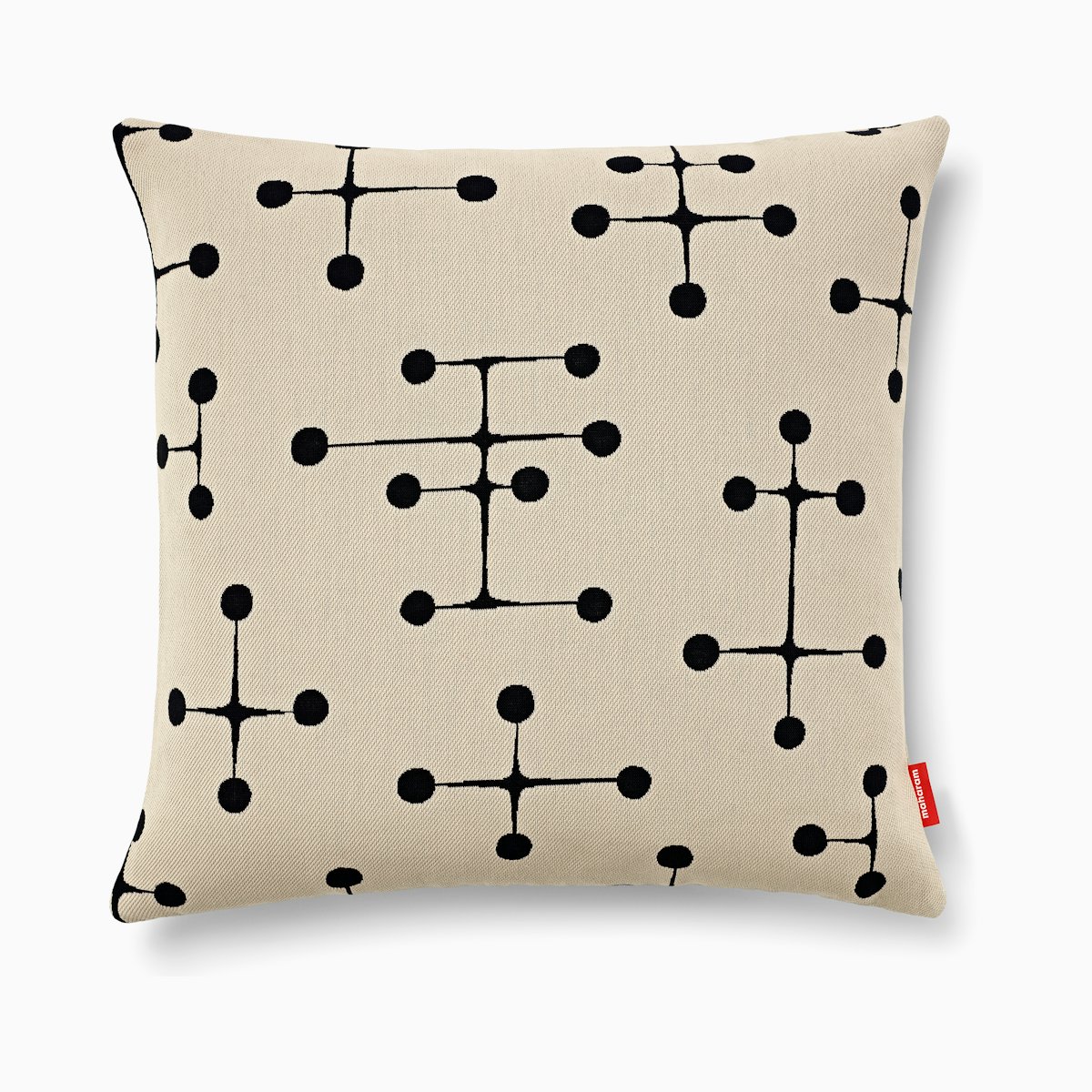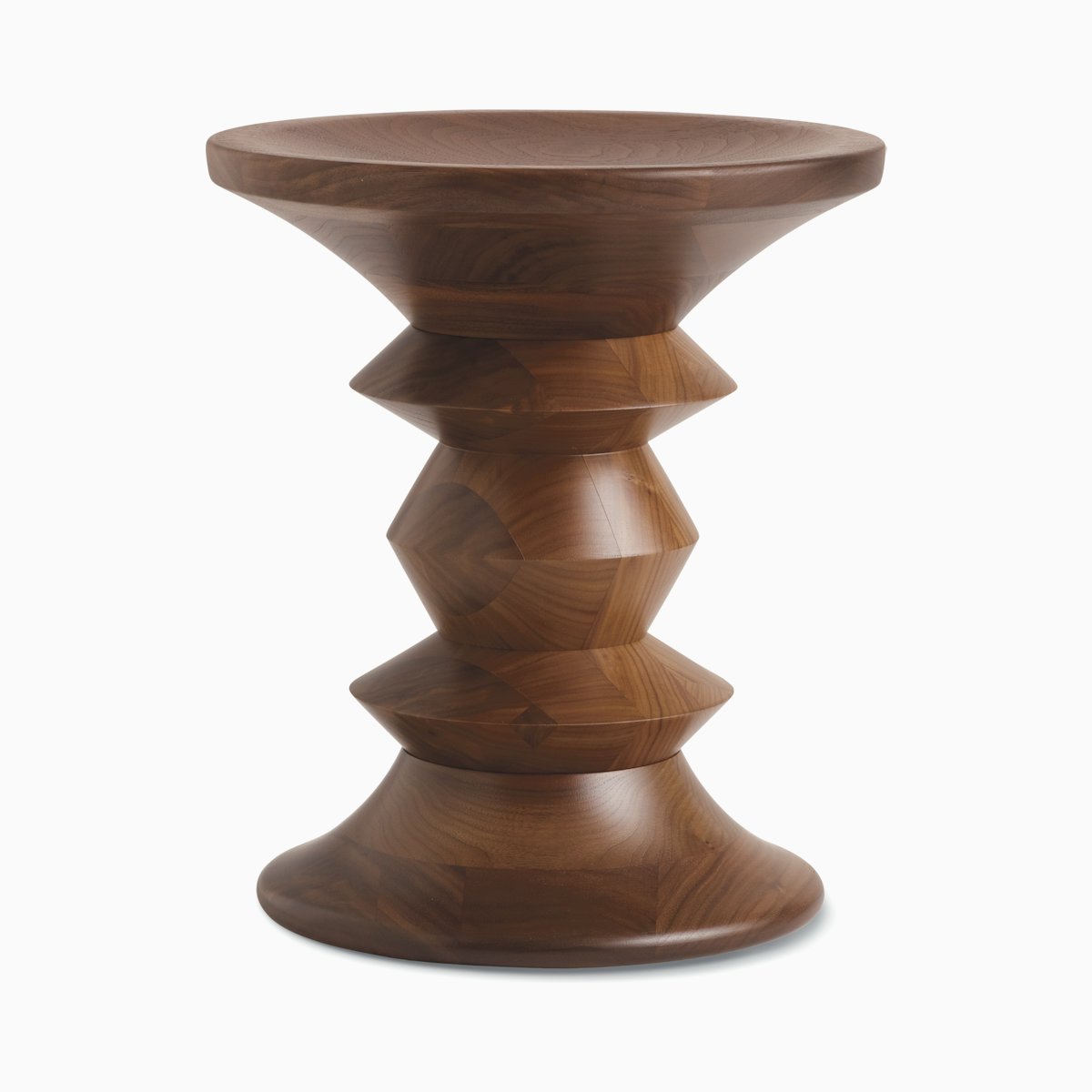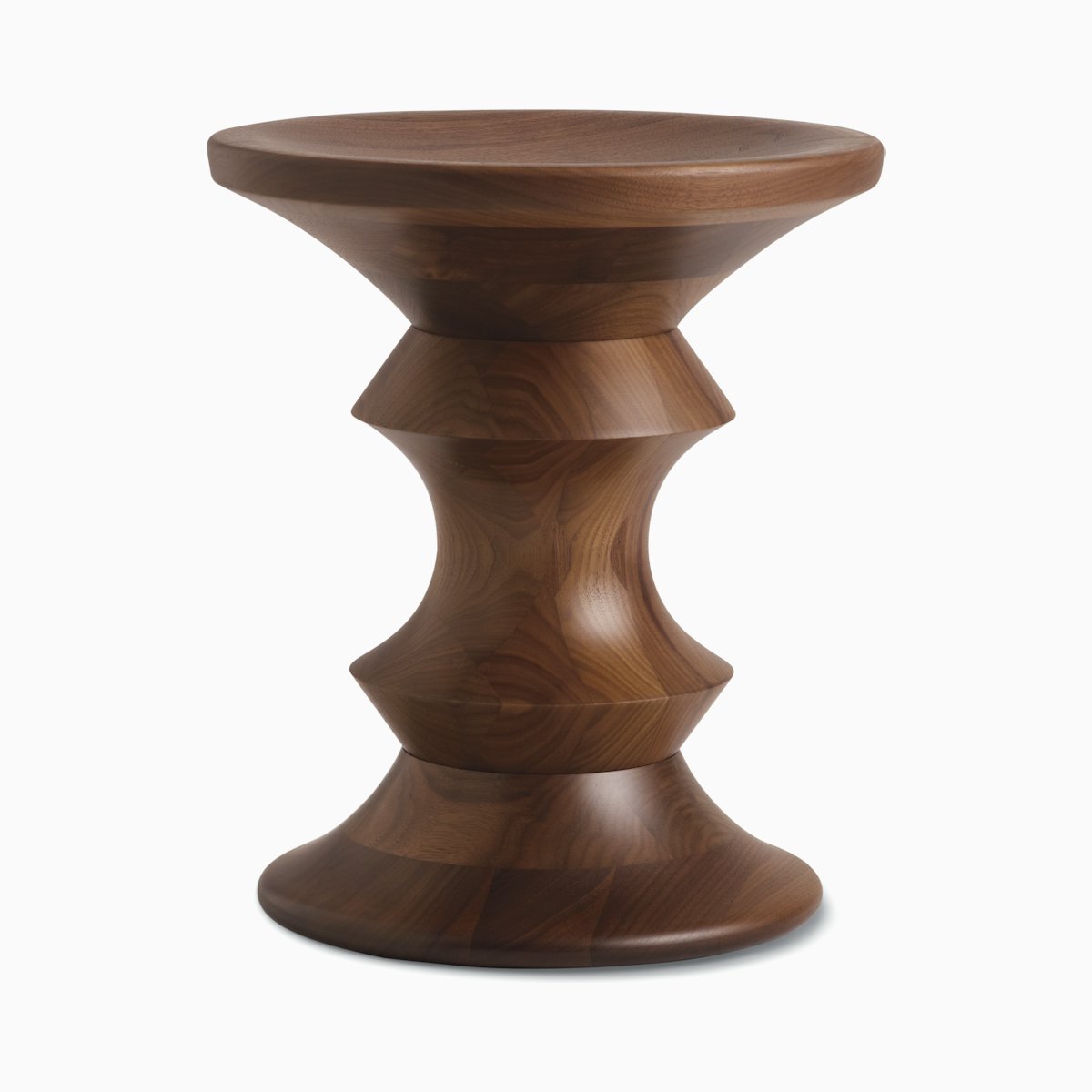Through their furniture, corporate projects, World’s Fair displays, and in the aesthetics of their own California Case Study home, the Eameses exemplified modern living in postwar America. The Eames Lounge and Ottoman, introduced by Herman Miller in 1956, remains a touchstone of American style.
Charles and Ray Eames’ designs were a colorful, ergonomic, and even cozy approach to modern furniture. They pioneered the use of new materials—molded plywood and fiberglass chairs, desks and storage units set on wire frames—challenging old ideas about what furniture should be made of. They met in 1940 at the Cranbrook Academy of Art where Charles intended to study industrial design and Ray was an aspiring abstract painter. They collaborated with Eero Saarinen on a molded plywood chair for MoMA’s Organic Furniture Competition. During World War II, the Eameses were commissioned by the Navy to develop splints and stretchers using their molded plywood technique.
After the war, they established the Eames Office in Venice, California, and their prototypes became a product in 1946 when Herman Miller introduced the Eames molded plywood chair. With innovative touches like rubber shock absorbers, it seemed to anticipate its user’s comfort. In 1956, they introduced the Lounge Chair and Ottoman. Their riff on a leather club chair, Charles and Ray Eames’ lounge chair remains a beloved piece of 20th-century furniture.
Their Pacific Palisades home (built for Arts & Architecture magazine’s Case Study program) was filled with flowers, folk art, and Hans Hofmann paintings suspended from the ceiling—the living embodiment of their brand of vibrant, California modernism. They were also design ambassadors, producing a multi-screen presentation inside a dome by Buckminster Fuller for the American Exposition in Moscow in 1959. Their 1977 short film “Powers of Ten” explored scale in nature and design, from the smallest particles to the outer reaches of the universe. The film’s attentiveness and soaring perspective seems to capture the ethos of Charles and Ray Eames furniture: a belief that every gesture matters. “The details are not details,” Charles once said. “They make the product.”
View

Any Questions So Far? We Can Help.
Chat instantly with a Performance Specialist to get advice, recommendations and answers to all your questions.
